
January 2024 Mirum Pharmaceuticals: Transforming Lives in Rare Disease Exhibit 99.2
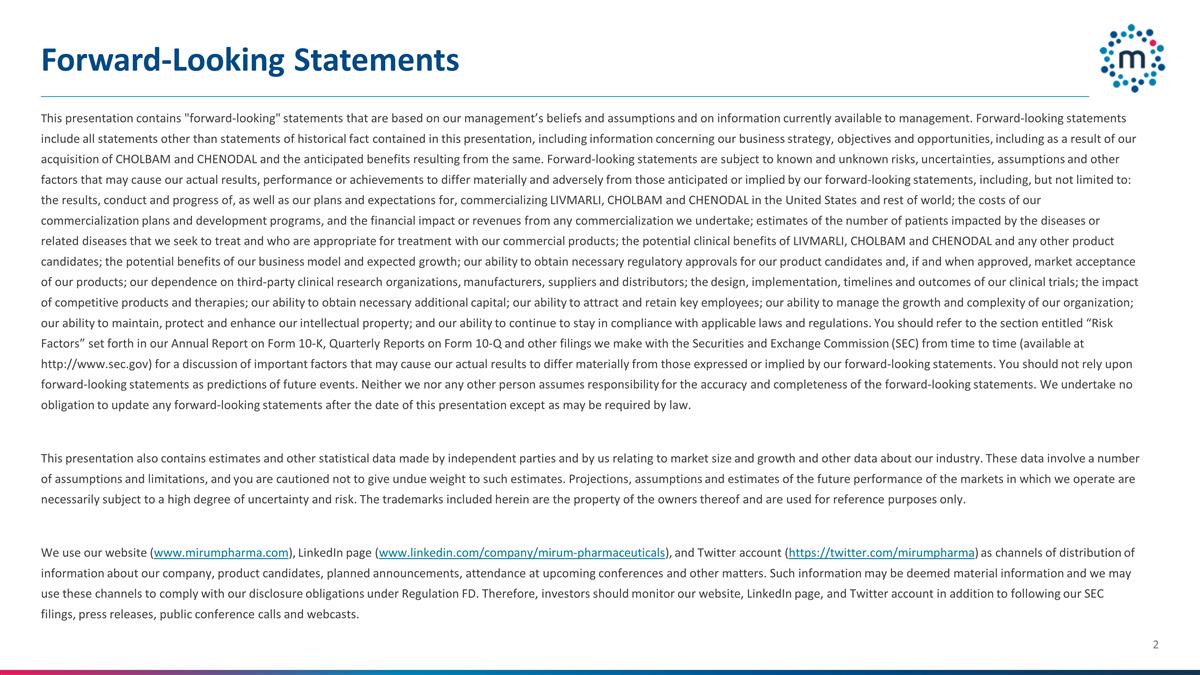
Forward-Looking Statements This presentation contains "forward-looking" statements that are based on our management’s beliefs and assumptions and on information currently available to management. Forward-looking statements include all statements other than statements of historical fact contained in this presentation, including information concerning our business strategy, objectives and opportunities, including as a result of our acquisition of CHOLBAM and CHENODAL and the anticipated benefits resulting from the same. Forward-looking statements are subject to known and unknown risks, uncertainties, assumptions and other factors that may cause our actual results, performance or achievements to differ materially and adversely from those anticipated or implied by our forward-looking statements, including, but not limited to: the results, conduct and progress of, as well as our plans and expectations for, commercializing LIVMARLI, CHOLBAM and CHENODAL in the United States and rest of world; the costs of our commercialization plans and development programs, and the financial impact or revenues from any commercialization we undertake; estimates of the number of patients impacted by the diseases or related diseases that we seek to treat and who are appropriate for treatment with our commercial products; the potential clinical benefits of LIVMARLI, CHOLBAM and CHENODAL and any other product candidates; the potential benefits of our business model and expected growth; our ability to obtain necessary regulatory approvals for our product candidates and, if and when approved, market acceptance of our products; our dependence on third-party clinical research organizations, manufacturers, suppliers and distributors; the design, implementation, timelines and outcomes of our clinical trials; the impact of competitive products and therapies; our ability to obtain necessary additional capital; our ability to attract and retain key employees; our ability to manage the growth and complexity of our organization; our ability to maintain, protect and enhance our intellectual property; and our ability to continue to stay in compliance with applicable laws and regulations. You should refer to the section entitled “Risk Factors” set forth in our Annual Report on Form 10-K, Quarterly Reports on Form 10-Q and other filings we make with the Securities and Exchange Commission (SEC) from time to time (available at http://www.sec.gov) for a discussion of important factors that may cause our actual results to differ materially from those expressed or implied by our forward-looking statements. You should not rely upon forward-looking statements as predictions of future events. Neither we nor any other person assumes responsibility for the accuracy and completeness of the forward-looking statements. We undertake no obligation to update any forward-looking statements after the date of this presentation except as may be required by law. This presentation also contains estimates and other statistical data made by independent parties and by us relating to market size and growth and other data about our industry. These data involve a number of assumptions and limitations, and you are cautioned not to give undue weight to such estimates. Projections, assumptions and estimates of the future performance of the markets in which we operate are necessarily subject to a high degree of uncertainty and risk. The trademarks included herein are the property of the owners thereof and are used for reference purposes only. We use our website (www.mirumpharma.com), LinkedIn page (www.linkedin.com/company/mirum-pharmaceuticals), and Twitter account (https://twitter.com/mirumpharma) as channels of distribution of information about our company, product candidates, planned announcements, attendance at upcoming conferences and other matters. Such information may be deemed material information and we may use these channels to comply with our disclosure obligations under Regulation FD. Therefore, investors should monitor our website, LinkedIn page, and Twitter account in addition to following our SEC filings, press releases, public conference calls and webcasts.
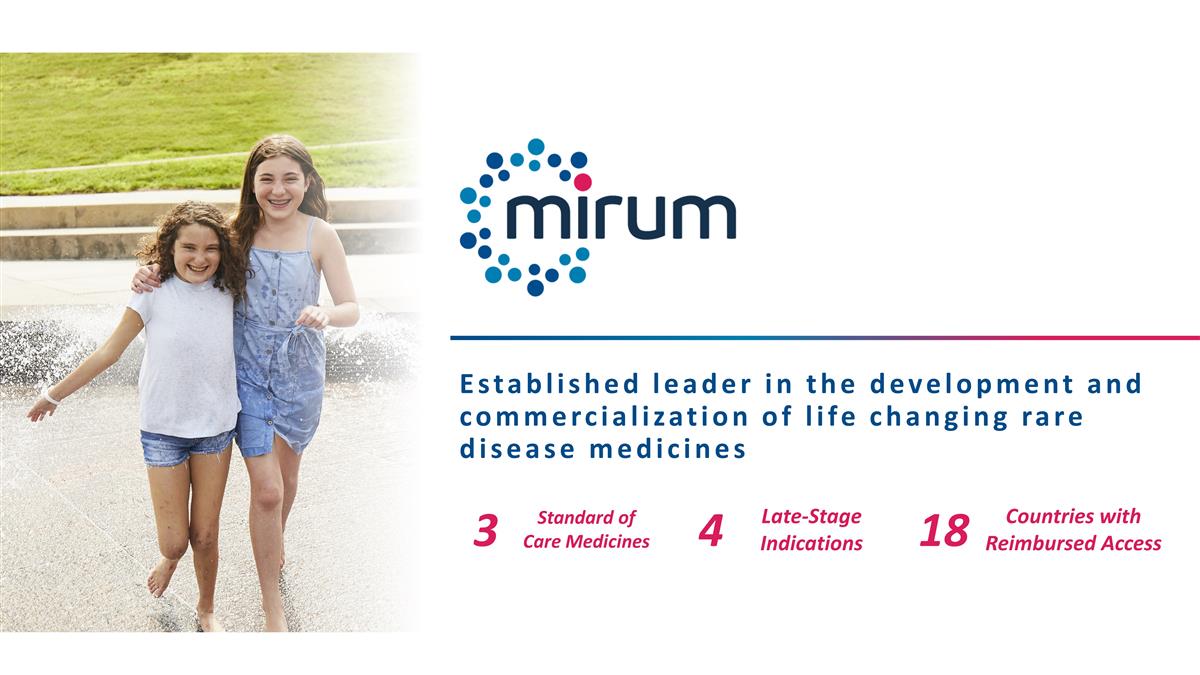
Established leader in the development and commercialization of life changing rare disease medicines Standard of Care Medicines Late-Stage Indications Countries with Reimbursed Access 3 4 18
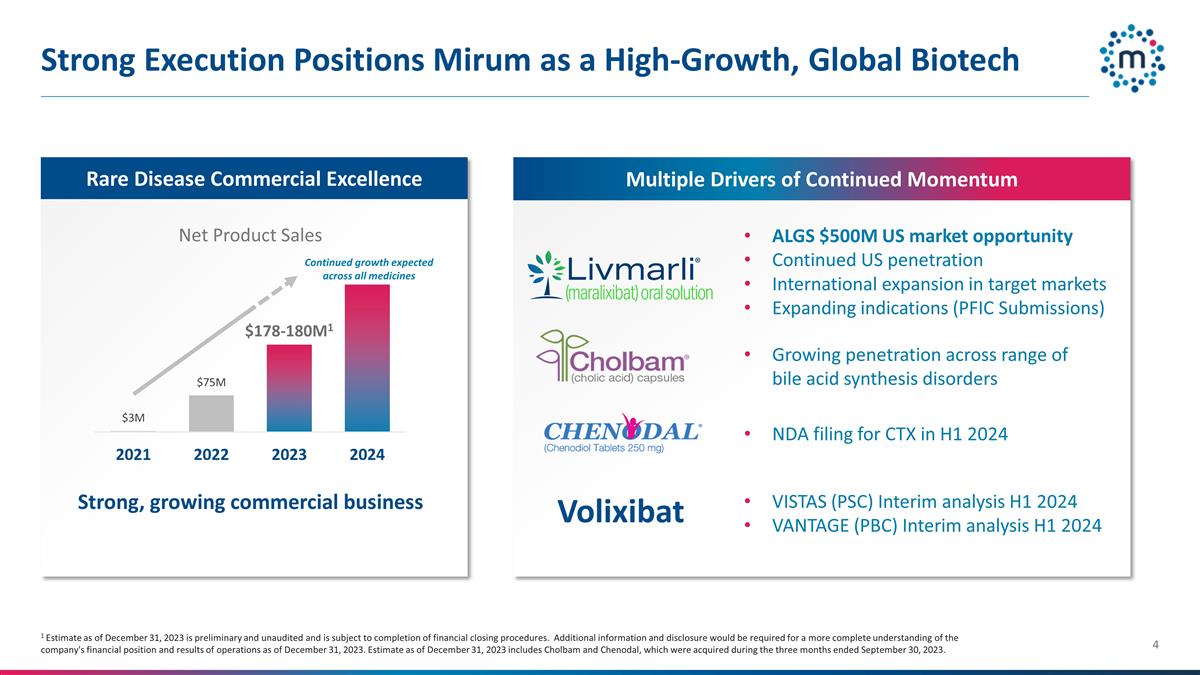
Strong Execution Positions Mirum as a High-Growth, Global Biotech ALGS $500M US market opportunity Continued US penetration International expansion in target markets Expanding indications (PFIC Submissions) Rare Disease Commercial Excellence Net Product Sales Growing penetration across range of bile acid synthesis disorders NDA filing for CTX in H1 2024 Multiple Drivers of Continued Momentum Strong, growing commercial business VISTAS (PSC) Interim analysis H1 2024 VANTAGE (PBC) Interim analysis H1 2024 Volixibat Continued growth expected across all medicines 1 Estimate as of December 31, 2023 is preliminary and unaudited and is subject to completion of financial closing procedures. Additional information and disclosure would be required for a more complete understanding of the company's financial position and results of operations as of December 31, 2023. Estimate as of December 31, 2023 includes Cholbam and Chenodal, which were acquired during the three months ended September 30, 2023.
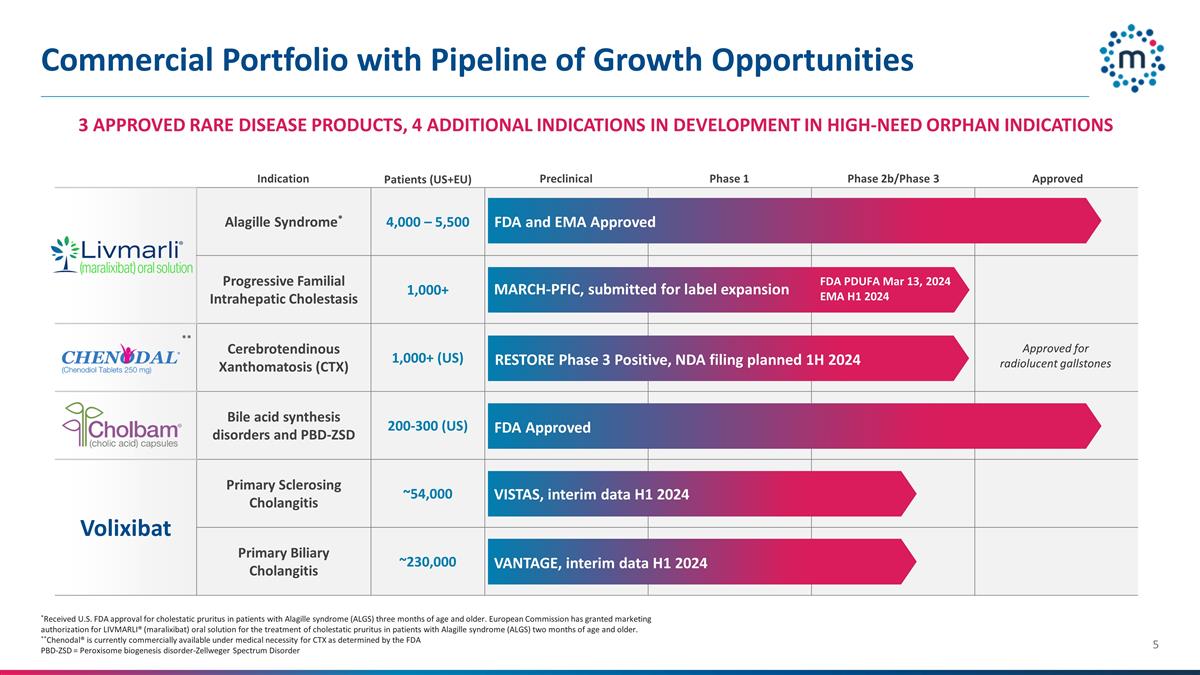
Commercial Portfolio with Pipeline of Growth Opportunities *Received U.S. FDA approval for cholestatic pruritus in patients with Alagille syndrome (ALGS) three months of age and older. European Commission has granted marketing authorization for LIVMARLI® (maralixibat) oral solution for the treatment of cholestatic pruritus in patients with Alagille syndrome (ALGS) two months of age and older. **Chenodal® is currently commercially available under medical necessity for CTX as determined by the FDA PBD-ZSD = Peroxisome biogenesis disorder-Zellweger Spectrum Disorder Alagille Syndrome* 4,000 – 5,500 LIVMARLI (maralixibat) Oral Solution Progressive Familial Intrahepatic Cholestasis 1,000+ Cerebrotendinous Xanthomatosis (CTX) 1,000+ (US) Bile acid synthesis disorders and PBD-ZSD 200-300 (US) Volixibat Primary Sclerosing Cholangitis ~54,000 Primary Biliary Cholangitis ~230,000 VISTAS, interim data H1 2024 VANTAGE, interim data H1 2024 RESTORE Phase 3 Positive, NDA filing planned 1H 2024 Phase 1 Approved Preclinical Phase 2b/Phase 3 MARCH-PFIC, submitted for label expansion FDA PDUFA Mar 13, 2024 EMA H1 2024 3 APPROVED RARE DISEASE PRODUCTS, 4 ADDITIONAL INDICATIONS IN DEVELOPMENT IN HIGH-NEED ORPHAN INDICATIONS FDA and EMA Approved FDA Approved Indication Patients (US+EU) ** Approved for radiolucent gallstones
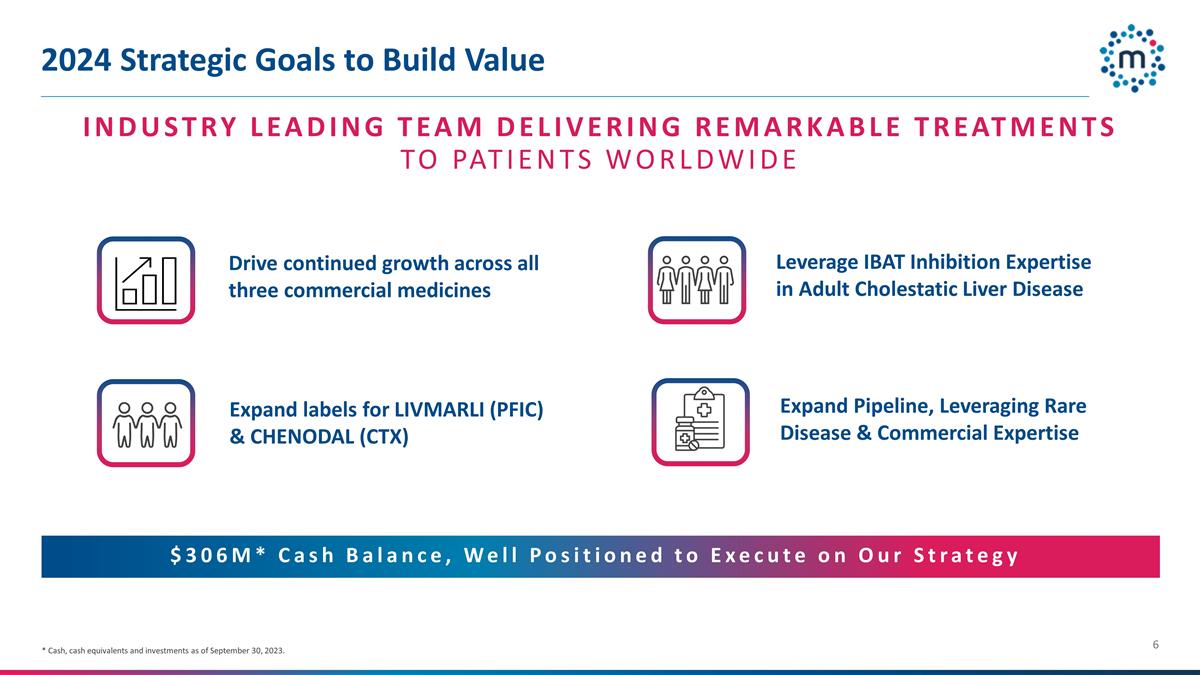
5 Clinical Programs 2024 Strategic Goals to Build Value INDUSTRY LEADING TEAM DELIVERING REMARKABLE TREATMENTS TO PATIENTS WORLDWIDE Drive continued growth across all three commercial medicines Expand labels for LIVMARLI (PFIC) & CHENODAL (CTX) Leverage IBAT Inhibition Expertise in Adult Cholestatic Liver Disease Expand Pipeline, Leveraging Rare Disease & Commercial Expertise $306M* Cash Balance, Well Positioned to Execute on Our Strategy * Cash, cash equivalents and investments as of September 30, 2023.
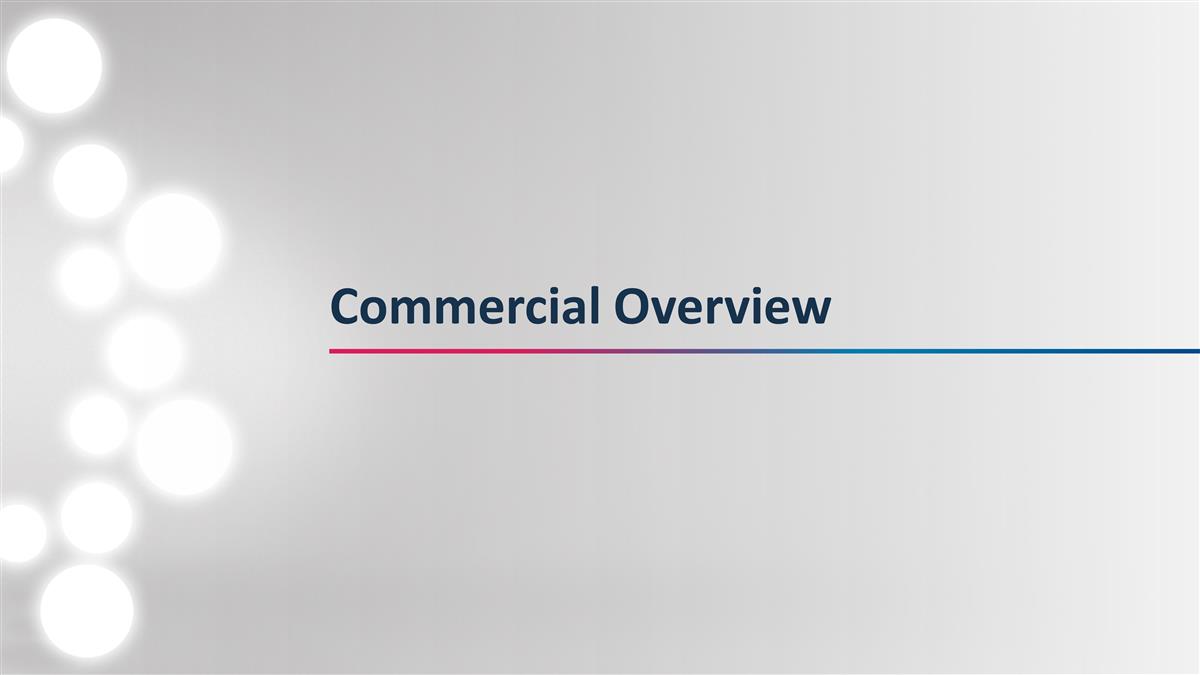
Commercial Overview
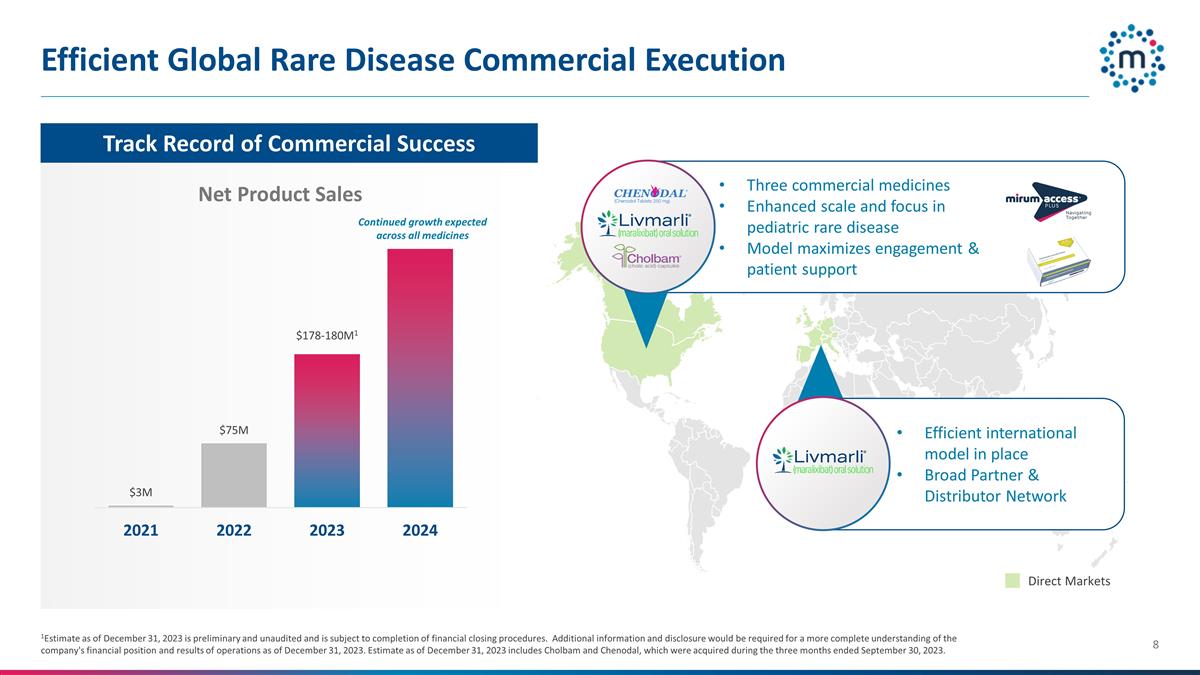
Efficient Global Rare Disease Commercial Execution 1Estimate as of December 31, 2023 is preliminary and unaudited and is subject to completion of financial closing procedures. Additional information and disclosure would be required for a more complete understanding of the company's financial position and results of operations as of December 31, 2023. Estimate as of December 31, 2023 includes Cholbam and Chenodal, which were acquired during the three months ended September 30, 2023. Direct Markets Net Product Sales Three commercial medicines Enhanced scale and focus in pediatric rare disease Model maximizes engagement & patient support Track Record of Commercial Success Efficient international model in place Broad Partner & Distributor Network Continued growth expected across all medicines
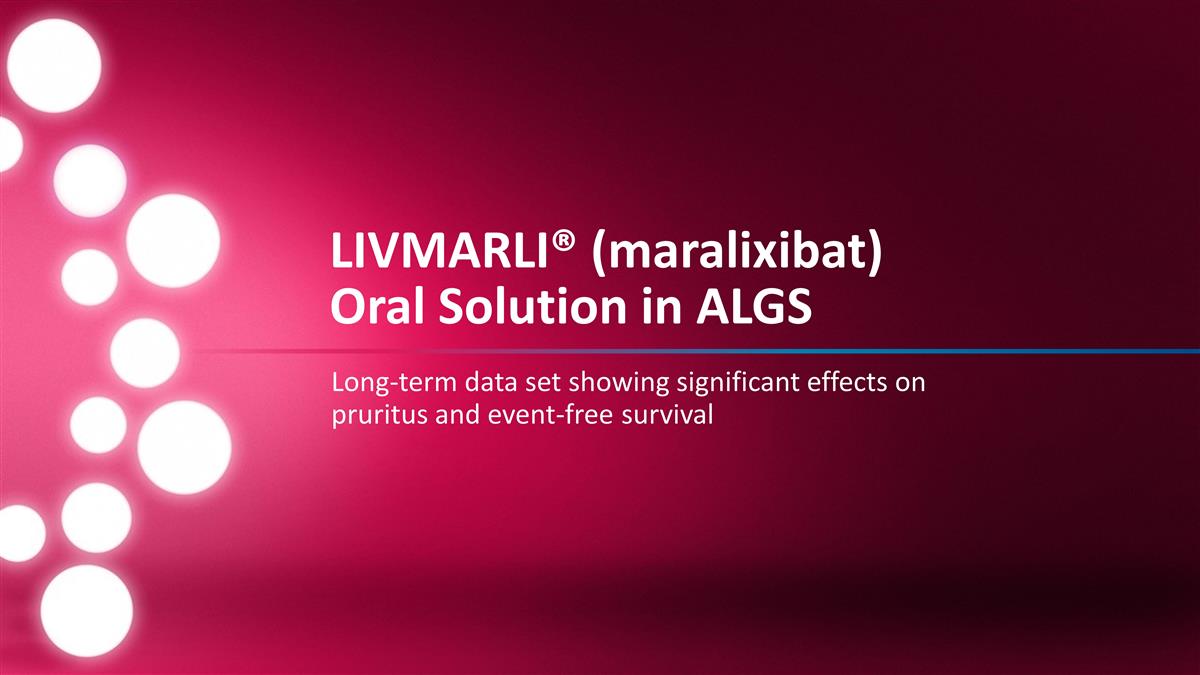
Long-term data set showing significant effects on pruritus and event-free survival LIVMARLI® (maralixibat) Oral Solution in ALGS
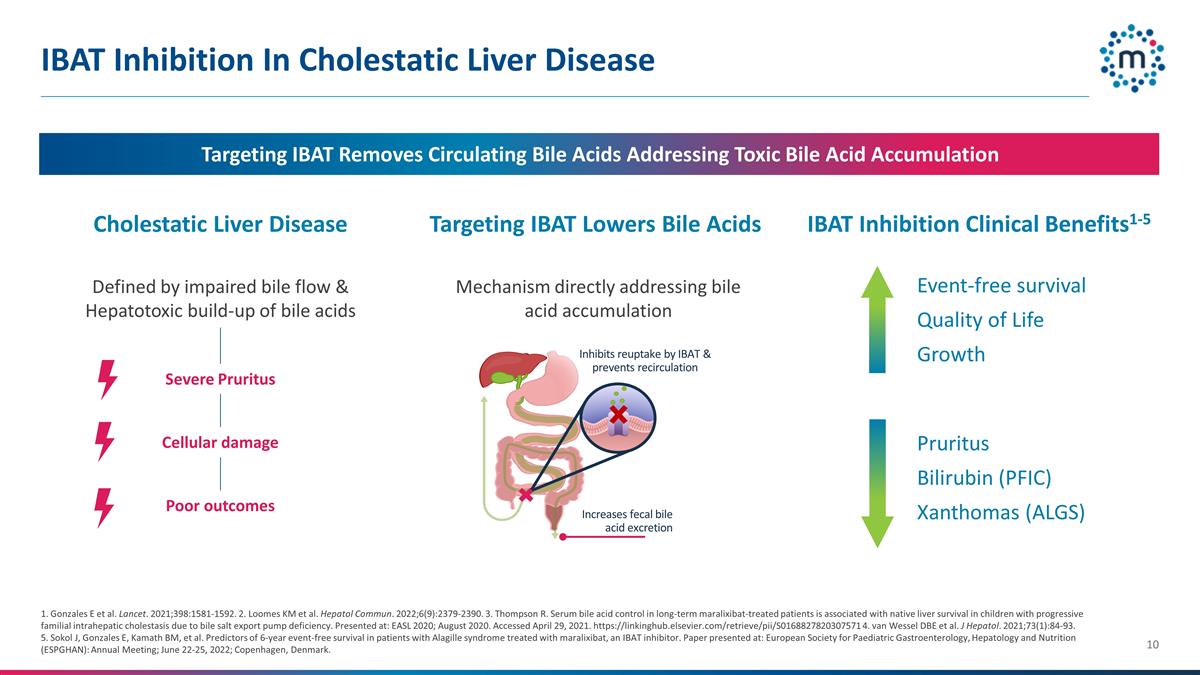
IBAT Inhibition In Cholestatic Liver Disease Targeting IBAT Removes Circulating Bile Acids Addressing Toxic Bile Acid Accumulation Pruritus Bilirubin (PFIC) Xanthomas (ALGS) Event-free survival Quality of Life Growth 1. Gonzales E et al. Lancet. 2021;398:1581-1592. 2. Loomes KM et al. Hepatol Commun. 2022;6(9):2379-2390. 3. Thompson R. Serum bile acid control in long-term maralixibat-treated patients is associated with native liver survival in children with progressive familial intrahepatic cholestasis due to bile salt export pump deficiency. Presented at: EASL 2020; August 2020. Accessed April 29, 2021. https://linkinghub.elsevier.com/retrieve/pii/S0168827820307571 4. van Wessel DBE et al. J Hepatol. 2021;73(1):84-93. 5. Sokol J, Gonzales E, Kamath BM, et al. Predictors of 6-year event-free survival in patients with Alagille syndrome treated with maralixibat, an IBAT inhibitor. Paper presented at: European Society for Paediatric Gastroenterology, Hepatology and Nutrition (ESPGHAN): Annual Meeting; June 22-25, 2022; Copenhagen, Denmark. Inhibits reuptake by IBAT & prevents recirculation Increases fecal bile acid excretion Cholestatic Liver Disease Defined by impaired bile flow & Hepatotoxic build-up of bile acids Targeting IBAT Lowers Bile Acids Mechanism directly addressing bile acid accumulation IBAT Inhibition Clinical Benefits1-5 Severe Pruritus Cellular damage Poor outcomes
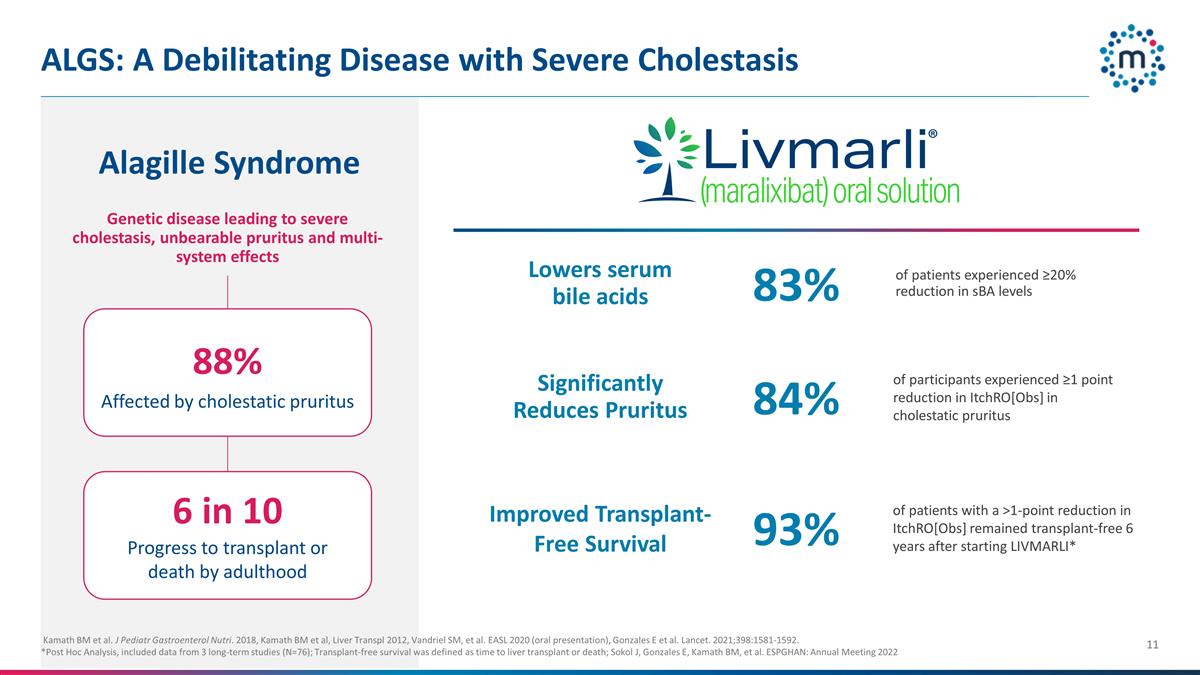
ALGS: A Debilitating Disease with Severe Cholestasis Kamath BM et al. J Pediatr Gastroenterol Nutri. 2018, Kamath BM et al, Liver Transpl 2012, Vandriel SM, et al. EASL 2020 (oral presentation), Gonzales E et al. Lancet. 2021;398:1581-1592. *Post Hoc Analysis, included data from 3 long-term studies (N=76); Transplant-free survival was defined as time to liver transplant or death; Sokol J, Gonzales E, Kamath BM, et al. ESPGHAN: Annual Meeting 2022 Genetic disease leading to severe cholestasis, unbearable pruritus and multi-system effects 88% Affected by cholestatic pruritus 6 in 10 Progress to transplant or death by adulthood Improved Transplant-Free Survival Lowers serum bile acids Alagille Syndrome Significantly Reduces Pruritus 84% 83% of patients with a >1-point reduction in ItchRO[Obs] remained transplant-free 6 years after starting LIVMARLI* of patients experienced ≥20% reduction in sBA levels of participants experienced ≥1 point reduction in ItchRO[Obs] in cholestatic pruritus 93%
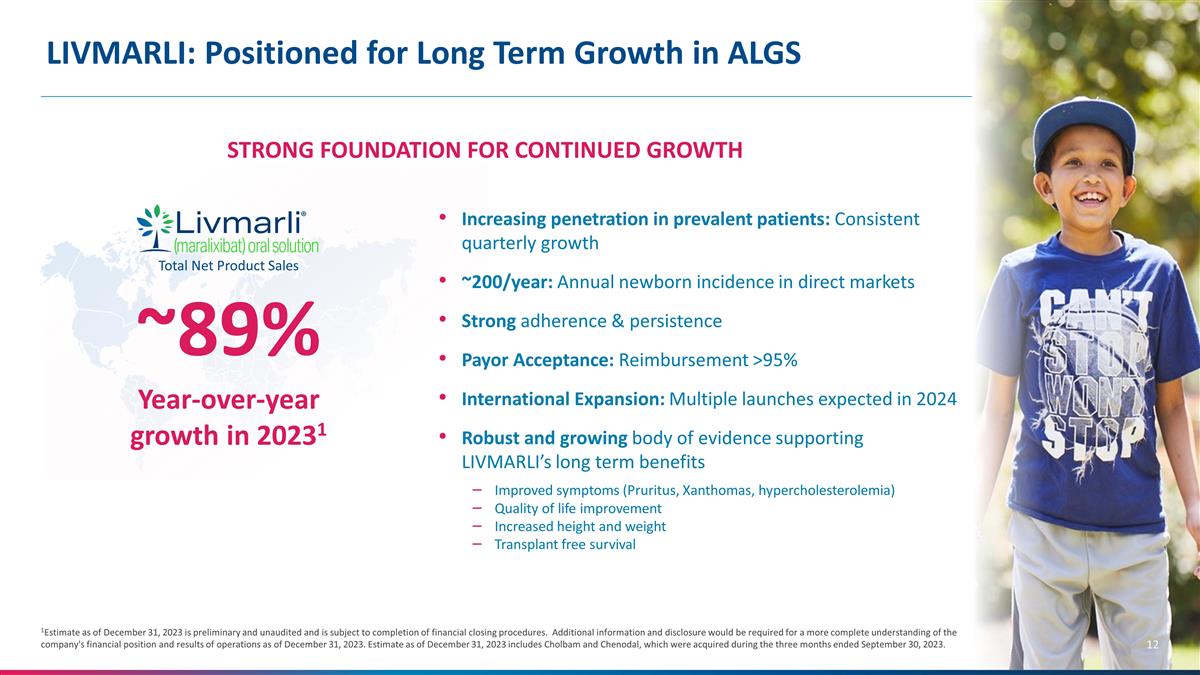
LIVMARLI: Positioned for Long Term Growth in ALGS 1Estimate as of December 31, 2023 is preliminary and unaudited and is subject to completion of financial closing procedures. Additional information and disclosure would be required for a more complete understanding of the company's financial position and results of operations as of December 31, 2023. Estimate as of December 31, 2023 includes Cholbam and Chenodal, which were acquired during the three months ended September 30, 2023. Increasing penetration in prevalent patients: Consistent quarterly growth ~200/year: Annual newborn incidence in direct markets Strong adherence & persistence Payor Acceptance: Reimbursement >95% International Expansion: Multiple launches expected in 2024 Robust and growing body of evidence supporting LIVMARLI’s long term benefits Improved symptoms (Pruritus, Xanthomas, hypercholesterolemia) Quality of life improvement Increased height and weight Transplant free survival STRONG FOUNDATION FOR CONTINUED GROWTH Total Net Product Sales ~89% Year-over-year growth in 20231
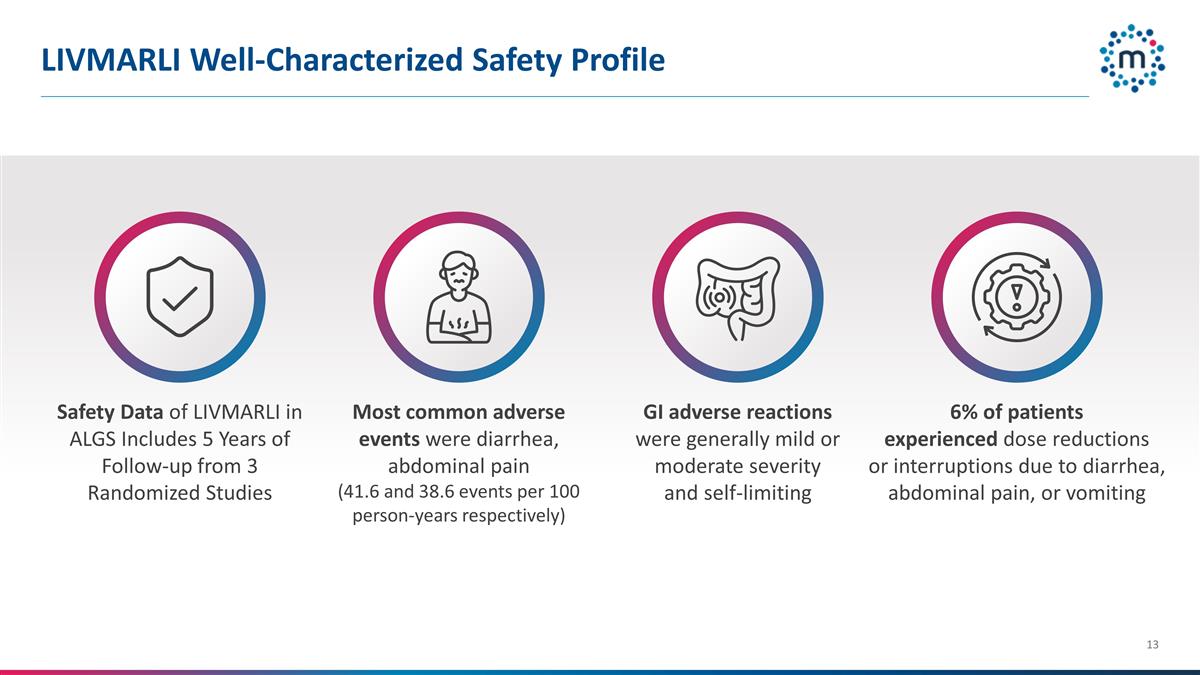
LIVMARLI Well-Characterized Safety Profile Safety Data of LIVMARLI in ALGS Includes 5 Years of Follow-up from 3 Randomized Studies Most common adverse events were diarrhea, abdominal pain (41.6 and 38.6 events per 100 person-years respectively) GI adverse reactions were generally mild or moderate severity and self-limiting 6% of patients experienced dose reductions or interruptions due to diarrhea, abdominal pain, or vomiting

CHENODAL & CHOLBAM Bile Acid Portfolio
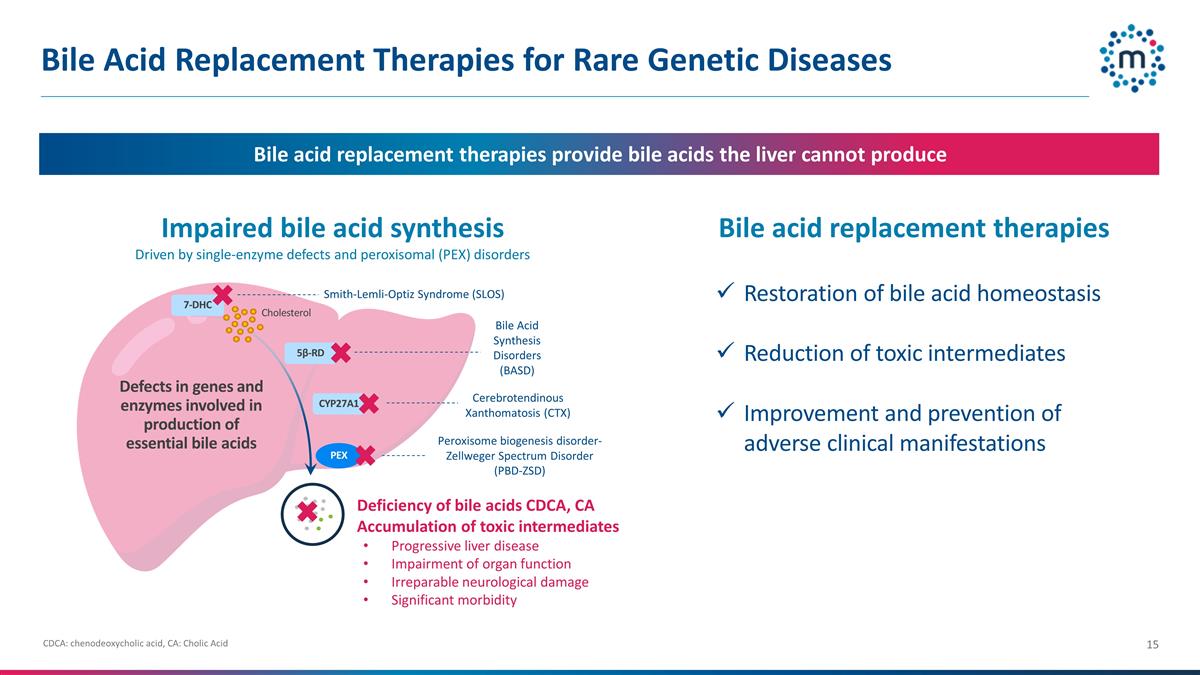
Bile Acid Replacement Therapies for Rare Genetic Diseases Impaired bile acid synthesis Driven by single-enzyme defects and peroxisomal (PEX) disorders Bile acid replacement therapies provide bile acids the liver cannot produce Peroxisome biogenesis disorder-Zellweger Spectrum Disorder (PBD-ZSD) Smith-Lemli-Optiz Syndrome (SLOS) Deficiency of bile acids CDCA, CA Accumulation of toxic intermediates Progressive liver disease Impairment of organ function Irreparable neurological damage Significant morbidity 7-DHC 5β-RD CYP27A1 Cholesterol Defects in genes and enzymes involved in production of essential bile acids PEX Bile acid replacement therapies Restoration of bile acid homeostasis Reduction of toxic intermediates Improvement and prevention of adverse clinical manifestations Bile Acid Synthesis Disorders (BASD) Cerebrotendinous Xanthomatosis (CTX) CDCA: chenodeoxycholic acid, CA: Cholic Acid
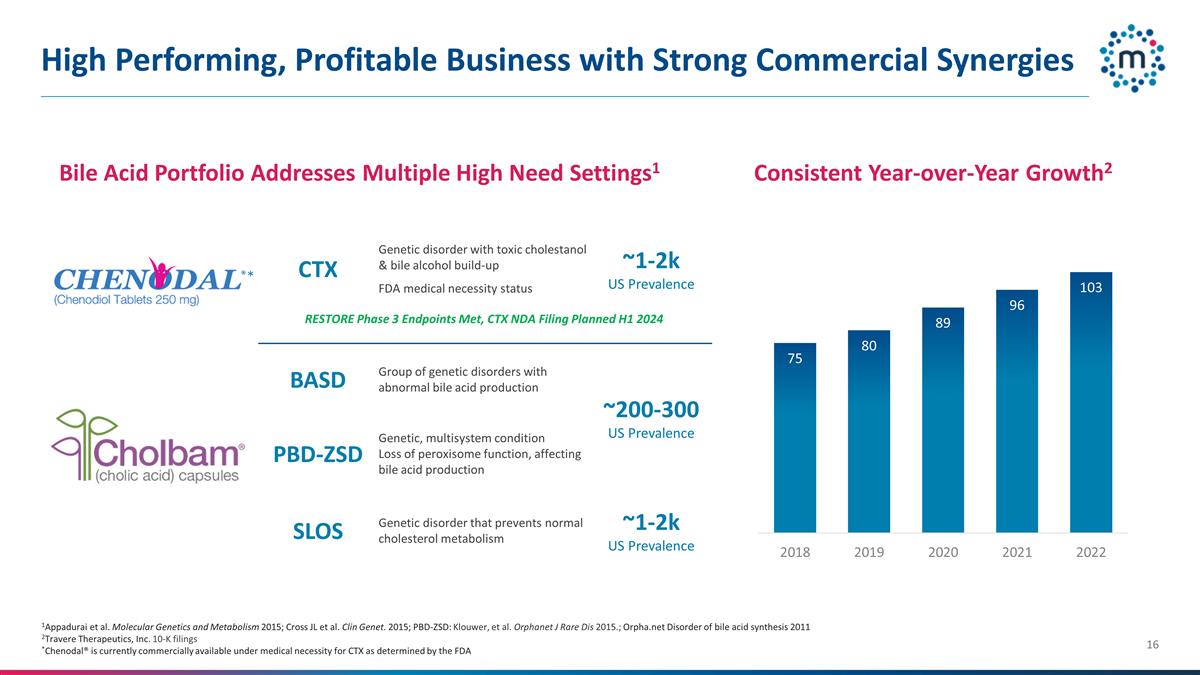
High Performing, Profitable Business with Strong Commercial Synergies CTX Genetic disorder with toxic cholestanol & bile alcohol build-up FDA medical necessity status ~1-2k US Prevalence BASD Group of genetic disorders with abnormal bile acid production ~200-300 US Prevalence PBD-ZSD Genetic, multisystem condition Loss of peroxisome function, affecting bile acid production ~1k SLOS Genetic disorder that prevents normal cholesterol metabolism ~1-2k US Prevalence Bile Acid Portfolio Addresses Multiple High Need Settings1 1Appadurai et al. Molecular Genetics and Metabolism 2015; Cross JL et al. Clin Genet. 2015; PBD-ZSD: Klouwer, et al. Orphanet J Rare Dis 2015.; Orpha.net Disorder of bile acid synthesis 2011 2Travere Therapeutics, Inc. 10-K filings *Chenodal® is currently commercially available under medical necessity for CTX as determined by the FDA Consistent Year-over-Year Growth2 RESTORE Phase 3 Endpoints Met, CTX NDA Filing Planned H1 2024 *
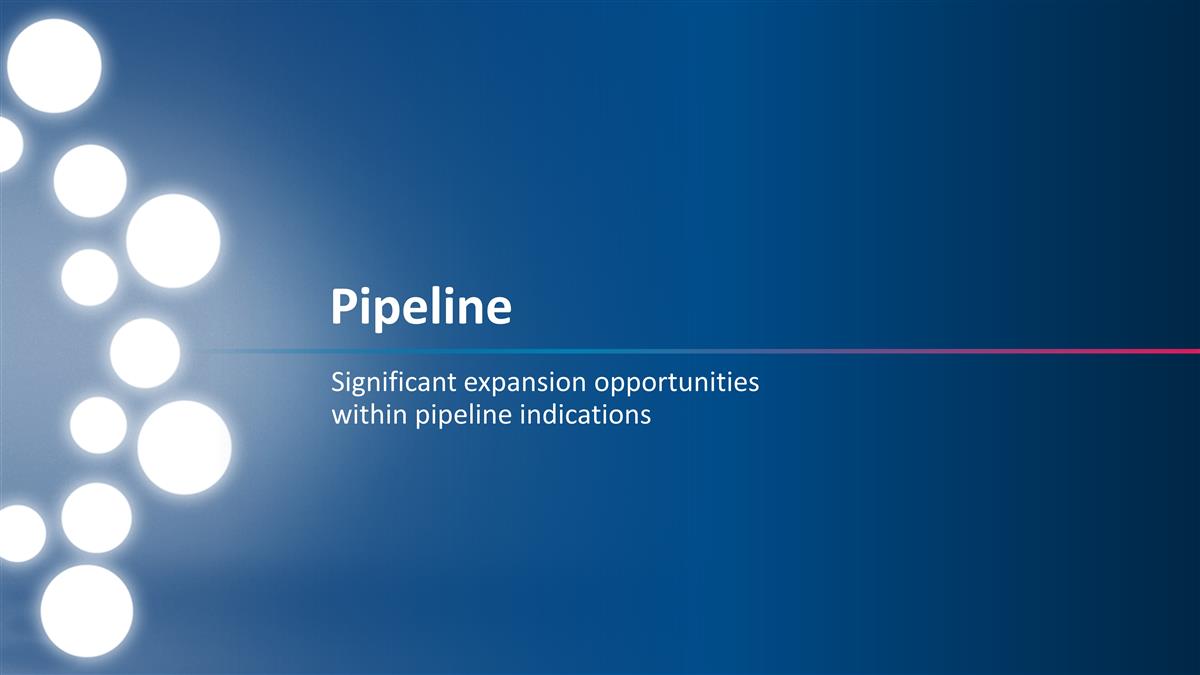
Significant expansion opportunities within pipeline indications Pipeline
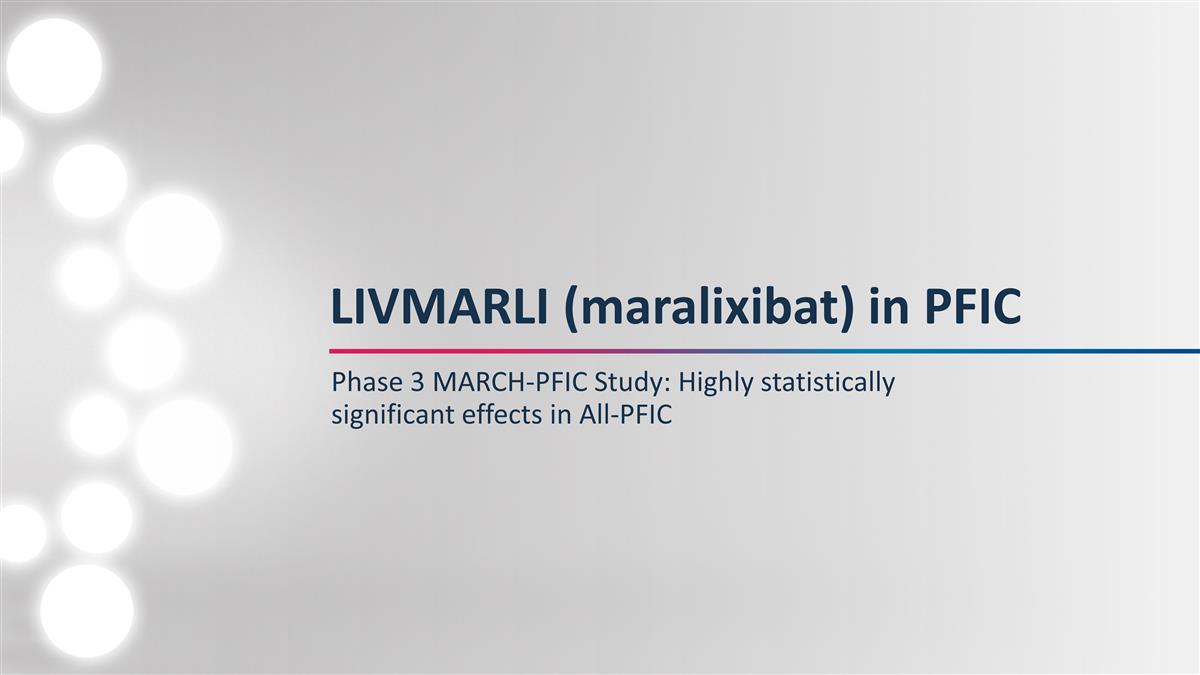
Phase 3 MARCH-PFIC Study: Highly statistically significant effects in All-PFIC LIVMARLI (maralixibat) in PFIC
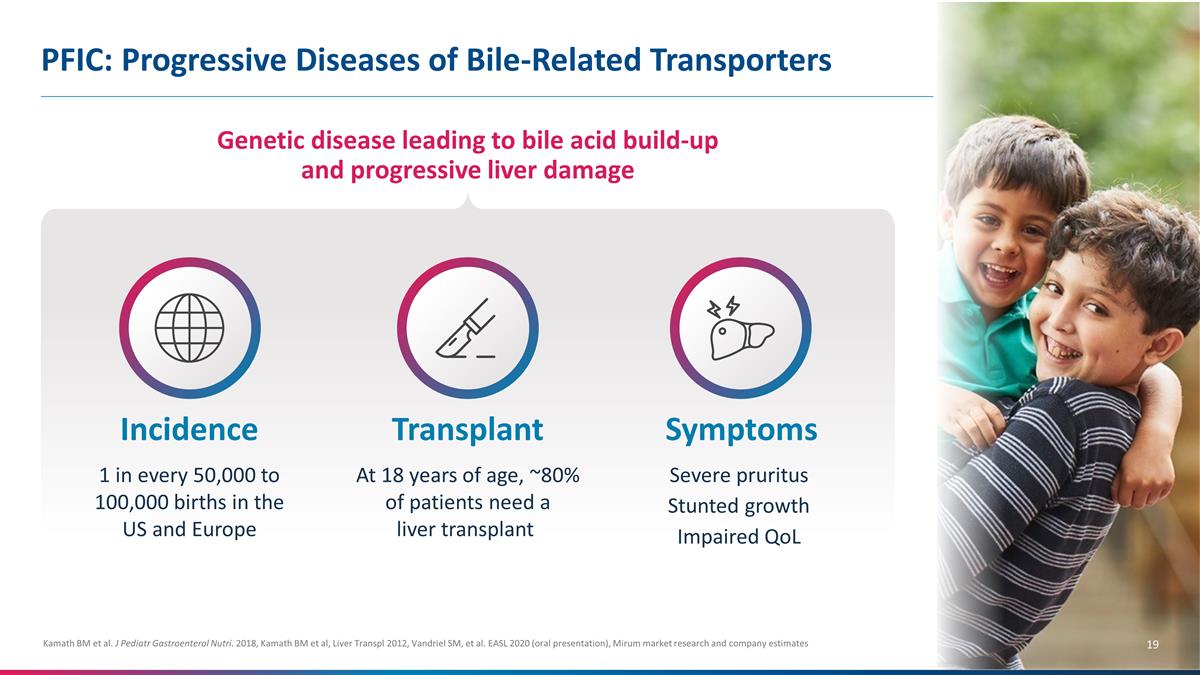
PFIC: Progressive Diseases of Bile-Related Transporters Kamath BM et al. J Pediatr Gastroenterol Nutri. 2018, Kamath BM et al, Liver Transpl 2012, Vandriel SM, et al. EASL 2020 (oral presentation), Mirum market research and company estimates Genetic disease leading to bile acid build-up and progressive liver damage Incidence 1 in every 50,000 to 100,000 births in the US and Europe Transplant At 18 years of age, ~80% of patients need a liver transplant Symptoms Severe pruritus Stunted growth Impaired QoL
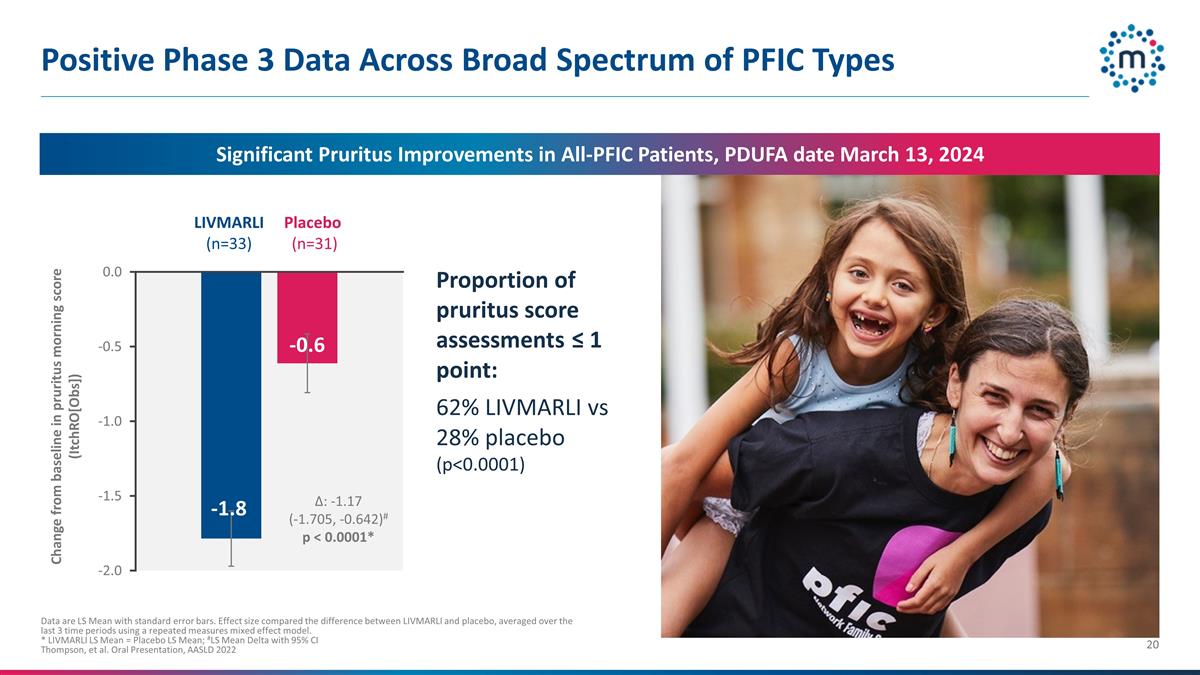
Positive Phase 3 Data Across Broad Spectrum of PFIC Types Data are LS Mean with standard error bars. Effect size compared the difference between LIVMARLI and placebo, averaged over the last 3 time periods using a repeated measures mixed effect model. * LIVMARLI LS Mean = Placebo LS Mean; #LS Mean Delta with 95% CI Thompson, et al. Oral Presentation, AASLD 2022 LIVMARLI (n=33) Placebo (n=31) Change from baseline in pruritus morning score (ItchRO[Obs]) Δ: -1.17 (-1.705, -0.642)# p < 0.0001* Proportion of pruritus score assessments ≤ 1 point: 62% LIVMARLI vs 28% placebo (p<0.0001) Significant Pruritus Improvements in All-PFIC Patients, PDUFA date March 13, 2024
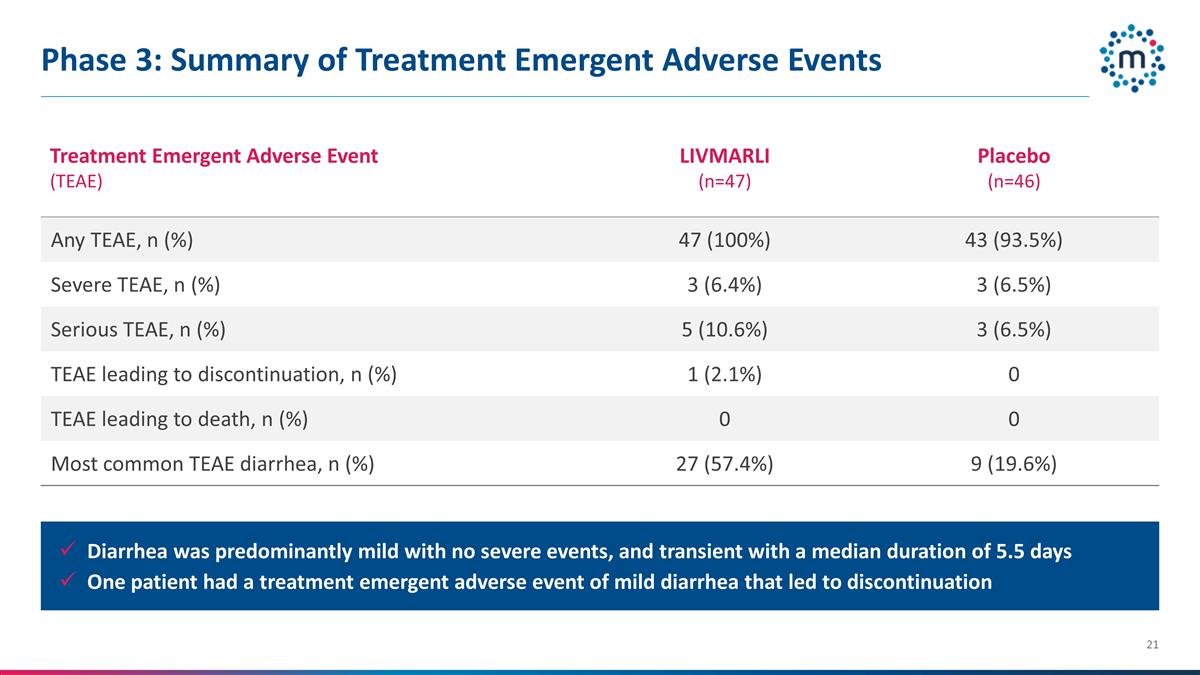
Phase 3: Summary of Treatment Emergent Adverse Events Treatment Emergent Adverse Event (TEAE) LIVMARLI (n=47) Placebo (n=46) Any TEAE, n (%) 47 (100%) 43 (93.5%) Severe TEAE, n (%) 3 (6.4%) 3 (6.5%) Serious TEAE, n (%) 5 (10.6%) 3 (6.5%) TEAE leading to discontinuation, n (%) 1 (2.1%) 0 TEAE leading to death, n (%) 0 0 Most common TEAE diarrhea, n (%) 27 (57.4%) 9 (19.6%) Diarrhea was predominantly mild with no severe events, and transient with a median duration of 5.5 days One patient had a treatment emergent adverse event of mild diarrhea that led to discontinuation
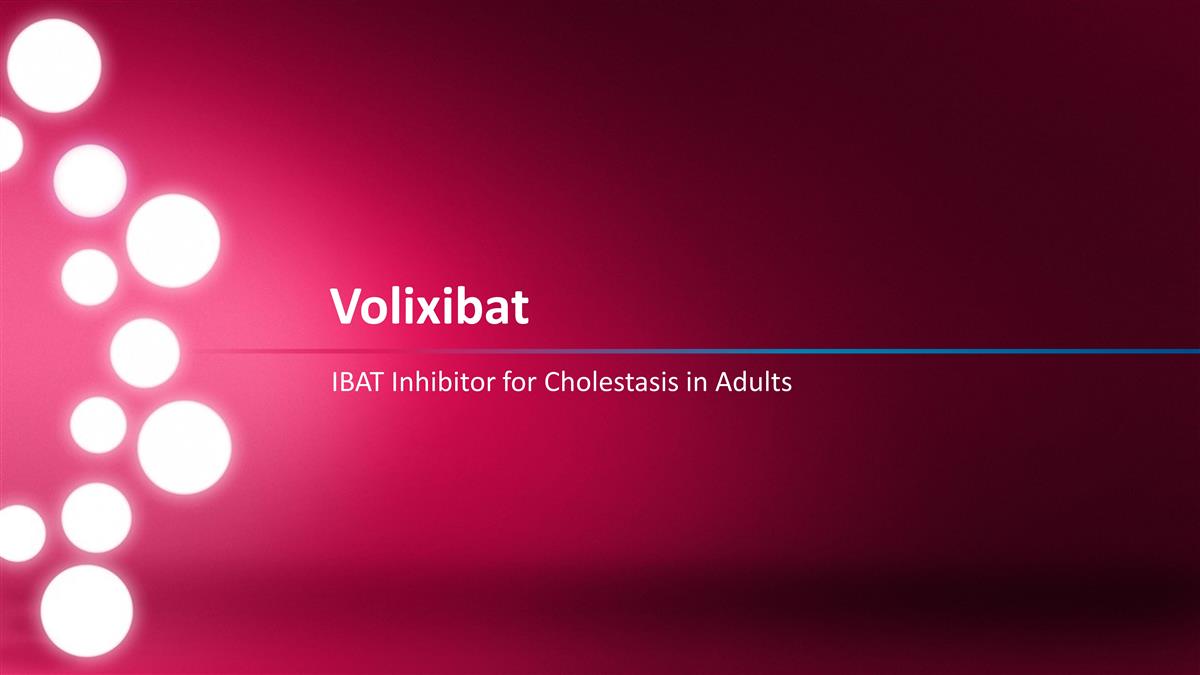
IBAT Inhibitor for Cholestasis in Adults Volixibat
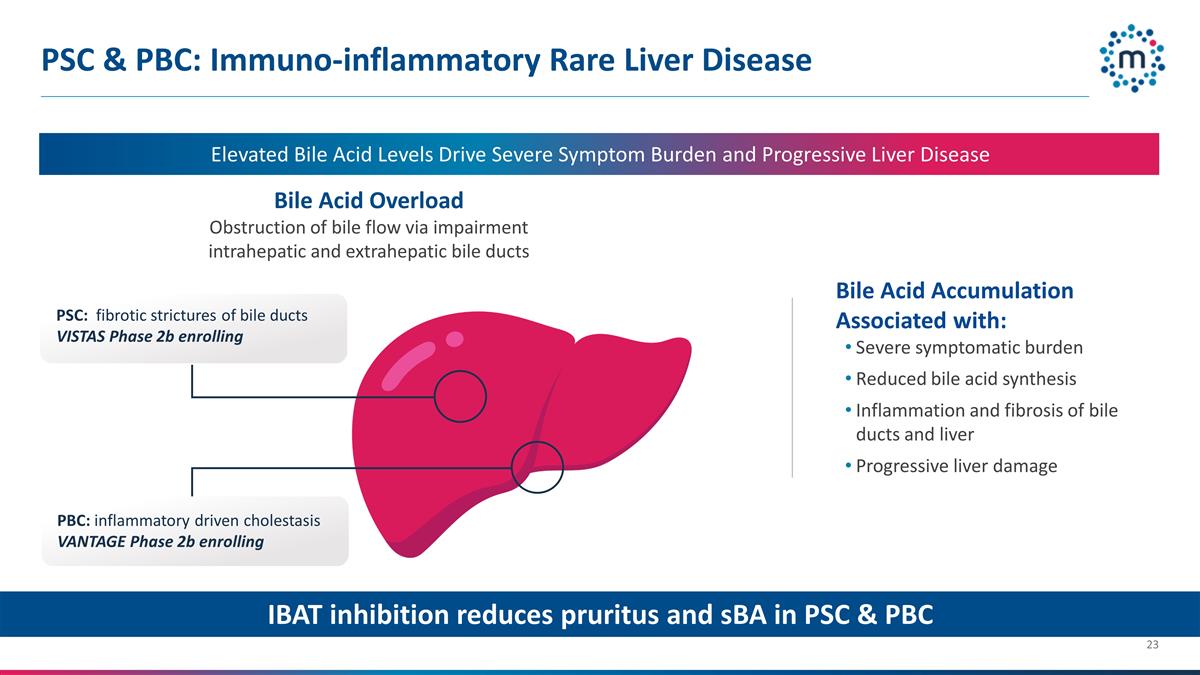
PSC & PBC: Immuno-inflammatory Rare Liver Disease Bile Acid Overload Obstruction of bile flow via impairment intrahepatic and extrahepatic bile ducts Elevated Bile Acid Levels Drive Severe Symptom Burden and Progressive Liver Disease Bile Acid Accumulation Associated with: Severe symptomatic burden Reduced bile acid synthesis Inflammation and fibrosis of bile ducts and liver Progressive liver damage PSC: fibrotic strictures of bile ducts VISTAS Phase 2b enrolling PBC: inflammatory driven cholestasis VANTAGE Phase 2b enrolling IBAT inhibition reduces pruritus and sBA in PSC & PBC
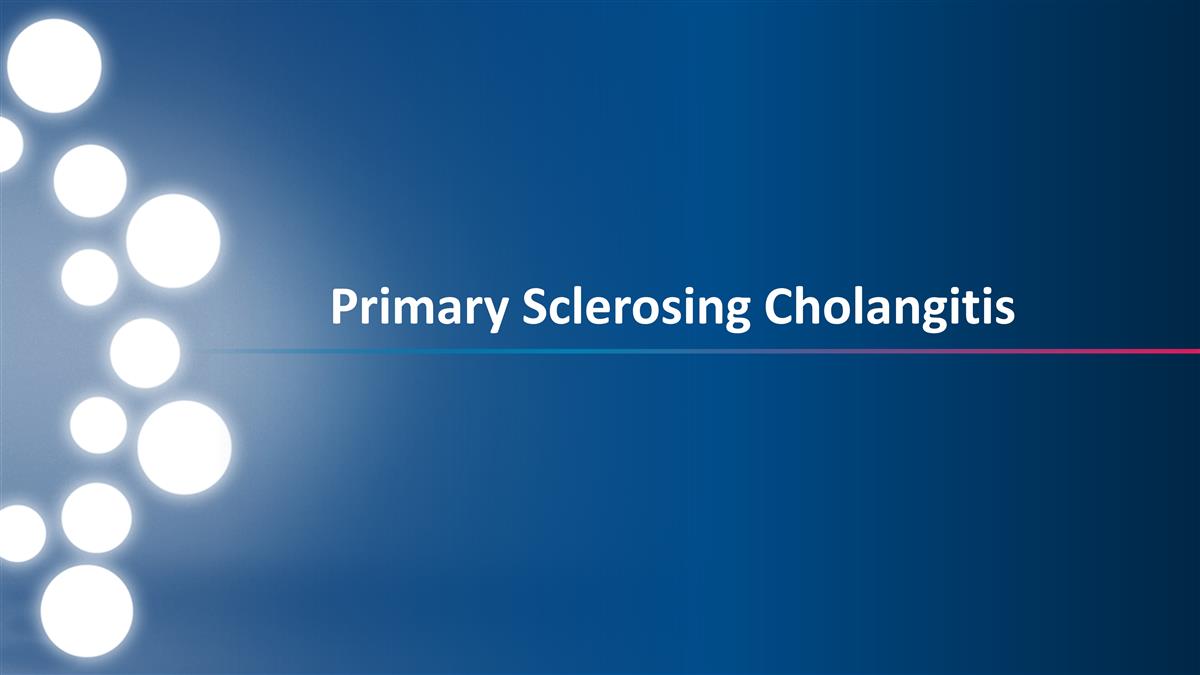
Primary Sclerosing Cholangitis
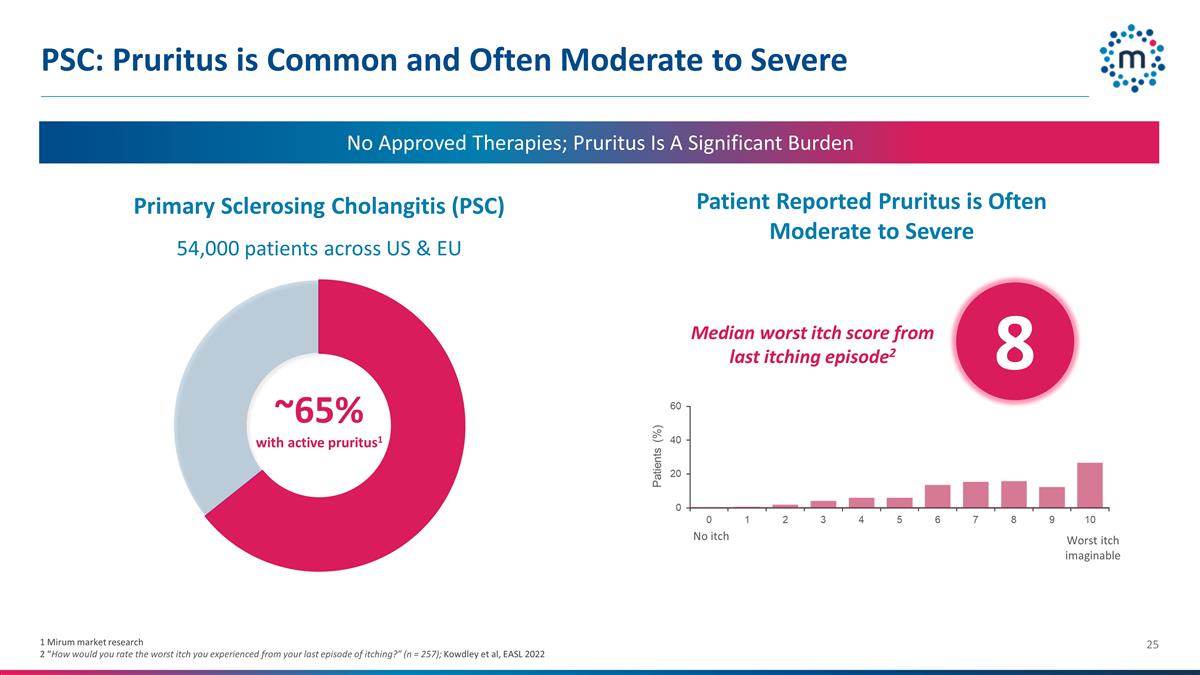
PSC: Pruritus is Common and Often Moderate to Severe 54,000 patients across US & EU ~65% with active pruritus1 1 Mirum market research 2 “How would you rate the worst itch you experienced from your last episode of itching?” (n = 257); Kowdley et al, EASL 2022 No Approved Therapies; Pruritus Is A Significant Burden Primary Sclerosing Cholangitis (PSC) Patient Reported Pruritus is Often Moderate to Severe No itch Worst itch imaginable 8 Median worst itch score from last itching episode2
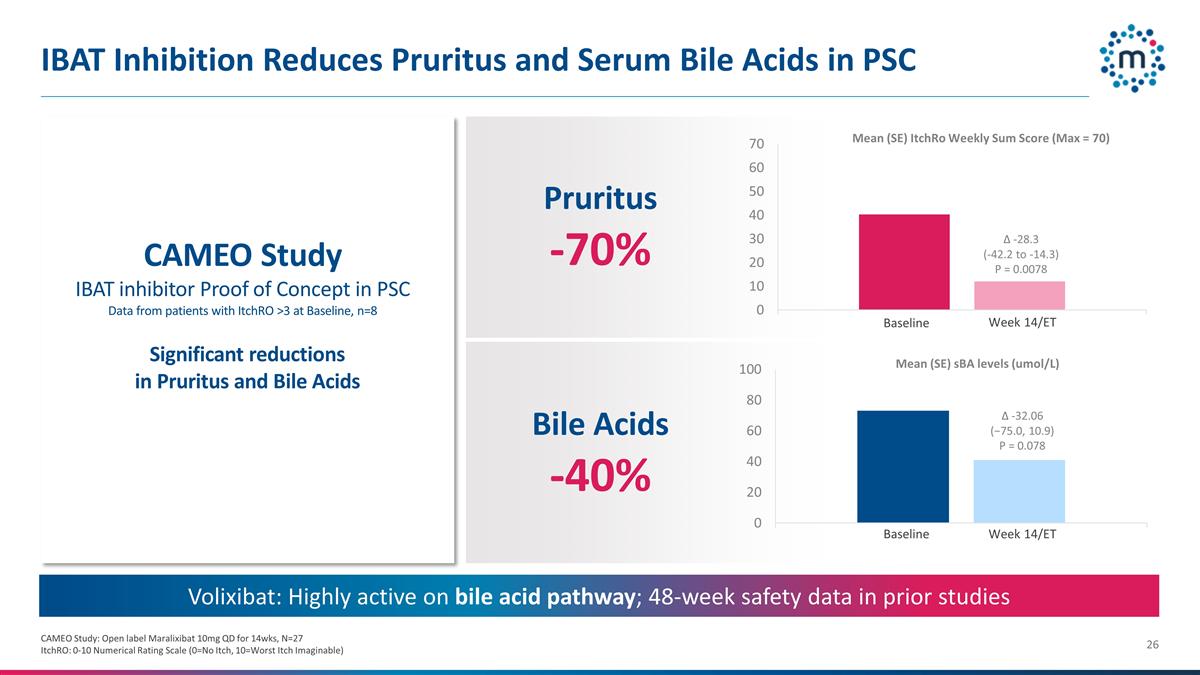
IBAT Inhibition Reduces Pruritus and Serum Bile Acids in PSC CAMEO Study: Open label Maralixibat 10mg QD for 14wks, N=27 ItchRO: 0-10 Numerical Rating Scale (0=No Itch, 10=Worst Itch Imaginable) Volixibat: Highly active on bile acid pathway; 48-week safety data in prior studies CAMEO Study IBAT inhibitor Proof of Concept in PSC Data from patients with ItchRO >3 at Baseline, n=8 Baseline Week 14/ET Pruritus -70% Mean (SE) ItchRo Weekly Sum Score (Max = 70) Bile Acids -40% Mean (SE) sBA levels (umol/L) Baseline Week 14/ET Δ -28.3 (-42.2 to -14.3) P = 0.0078 Δ -32.06 (−75.0, 10.9) P = 0.078 Significant reductions in Pruritus and Bile Acids
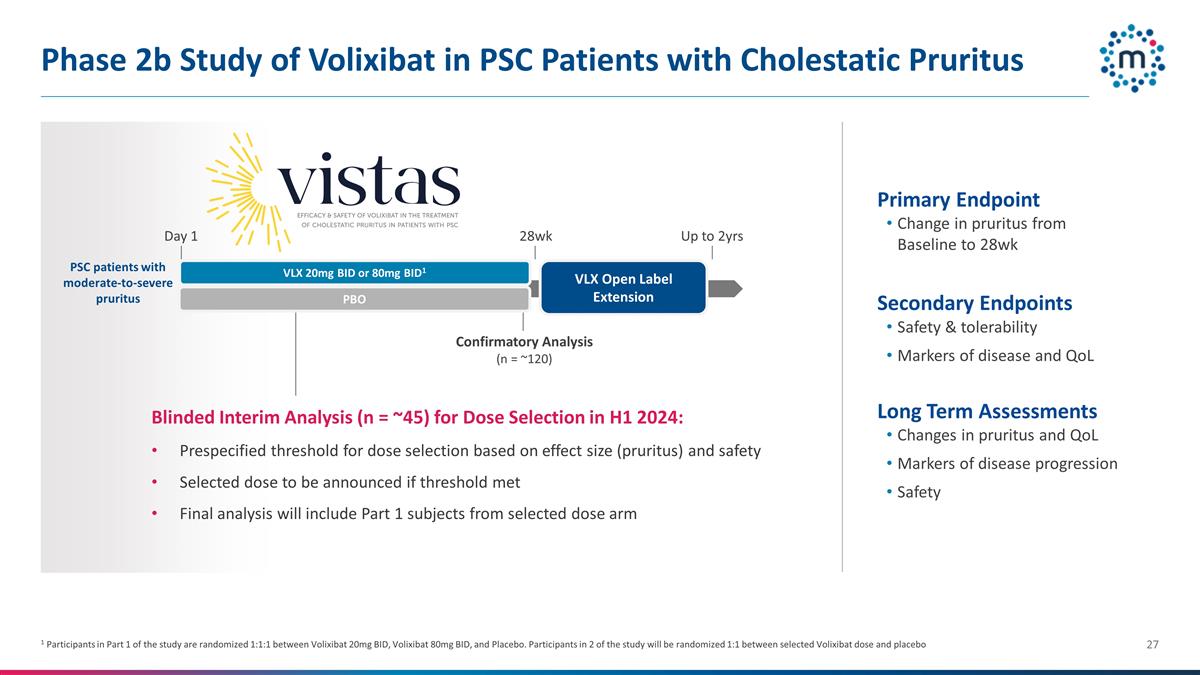
Phase 2b Study of Volixibat in PSC Patients with Cholestatic Pruritus Primary Endpoint Change in pruritus from Baseline to 28wk Secondary Endpoints Safety & tolerability Markers of disease and QoL Long Term Assessments Changes in pruritus and QoL Markers of disease progression Safety Up to 2yrs Blinded Interim Analysis (n = ~45) for Dose Selection in H1 2024: Prespecified threshold for dose selection based on effect size (pruritus) and safety Selected dose to be announced if threshold met Final analysis will include Part 1 subjects from selected dose arm Confirmatory Analysis (n = ~120) VLX 20mg BID or 80mg BID1 VLX Open Label Extension 28wk Day 1 1 Participants in Part 1 of the study are randomized 1:1:1 between Volixibat 20mg BID, Volixibat 80mg BID, and Placebo. Participants in 2 of the study will be randomized 1:1 between selected Volixibat dose and placebo PBO PSC patients with moderate-to-severe pruritus
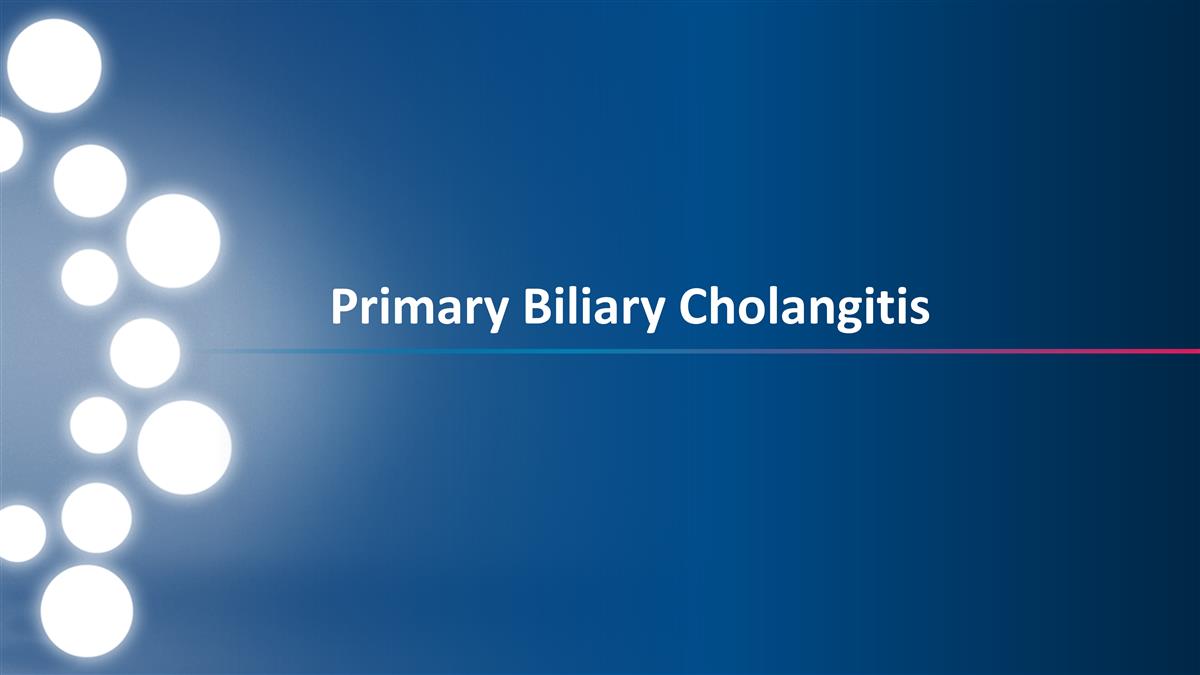
Primary Biliary Cholangitis

PBC: Most Prevalent Cholestatic Liver Disease 230,000 patients across US & EU *Mirum market research Significant Global Opportunity Across 1st & 2nd Line Settings 1st line therapy patients (ALP <1.67xULN) 2nd line therapy patients (ALP >1.67xULN) ~60% with active pruritus* Primary Biliary Cholangitis (PBC) Similar rate of pruritus in 1st & 2nd line Often moderate-to-severe, impacting QoL No approved therapies for pruritus IBAT inhibition reduces pruritus & bile acids in PBC
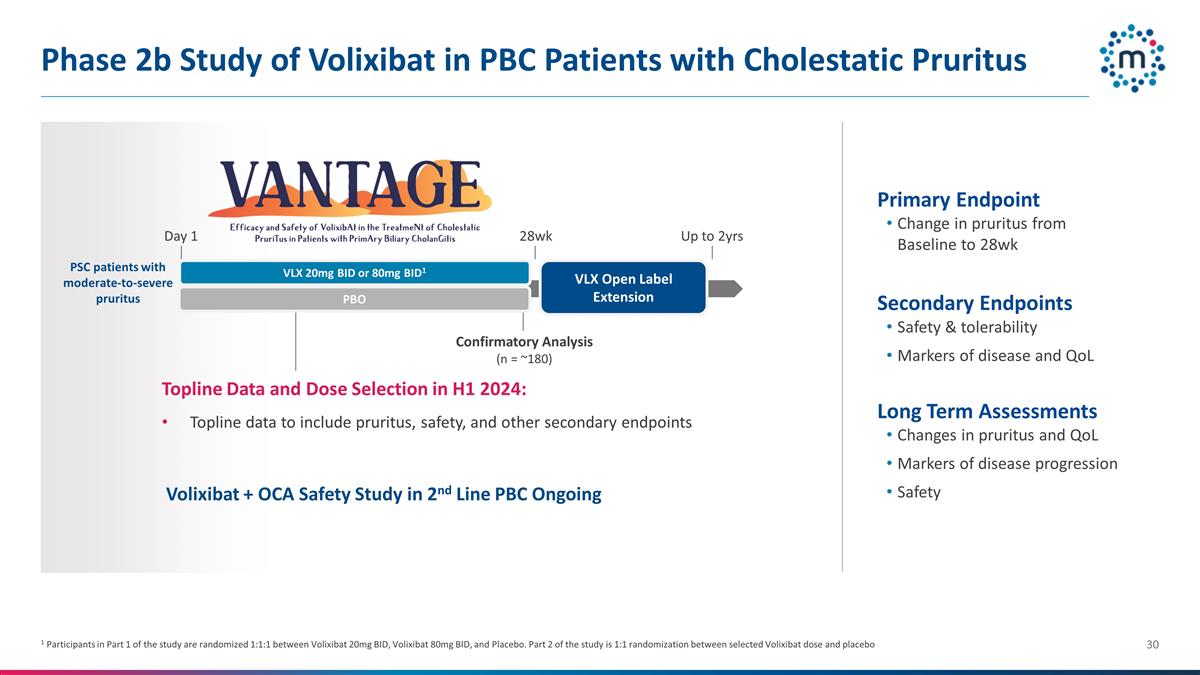
Phase 2b Study of Volixibat in PBC Patients with Cholestatic Pruritus Primary Endpoint Change in pruritus from Baseline to 28wk Secondary Endpoints Safety & tolerability Markers of disease and QoL Long Term Assessments Changes in pruritus and QoL Markers of disease progression Safety Up to 2yrs Topline Data and Dose Selection in H1 2024: Topline data to include pruritus, safety, and other secondary endpoints Confirmatory Analysis (n = ~180) VLX Open Label Extension 28wk Day 1 1 Participants in Part 1 of the study are randomized 1:1:1 between Volixibat 20mg BID, Volixibat 80mg BID, and Placebo. Part 2 of the study is 1:1 randomization between selected Volixibat dose and placebo Volixibat + OCA Safety Study in 2nd Line PBC Ongoing VLX 20mg BID or 80mg BID1 PBO PSC patients with moderate-to-severe pruritus
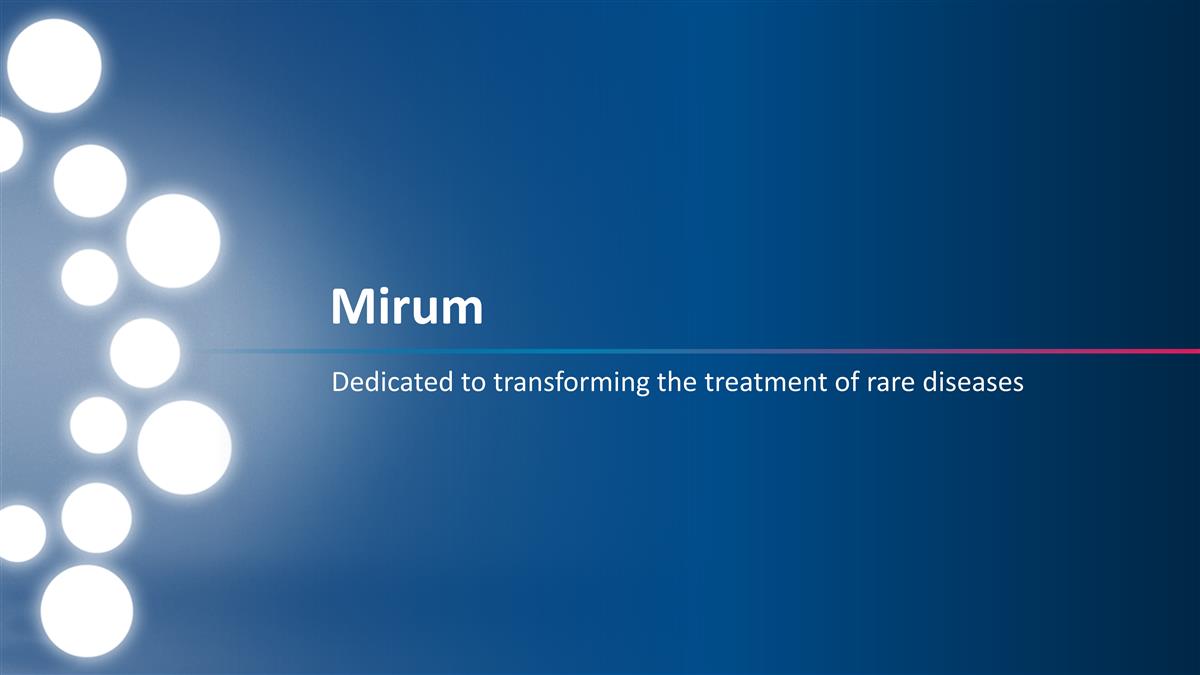
Dedicated to transforming the treatment of rare diseases Mirum
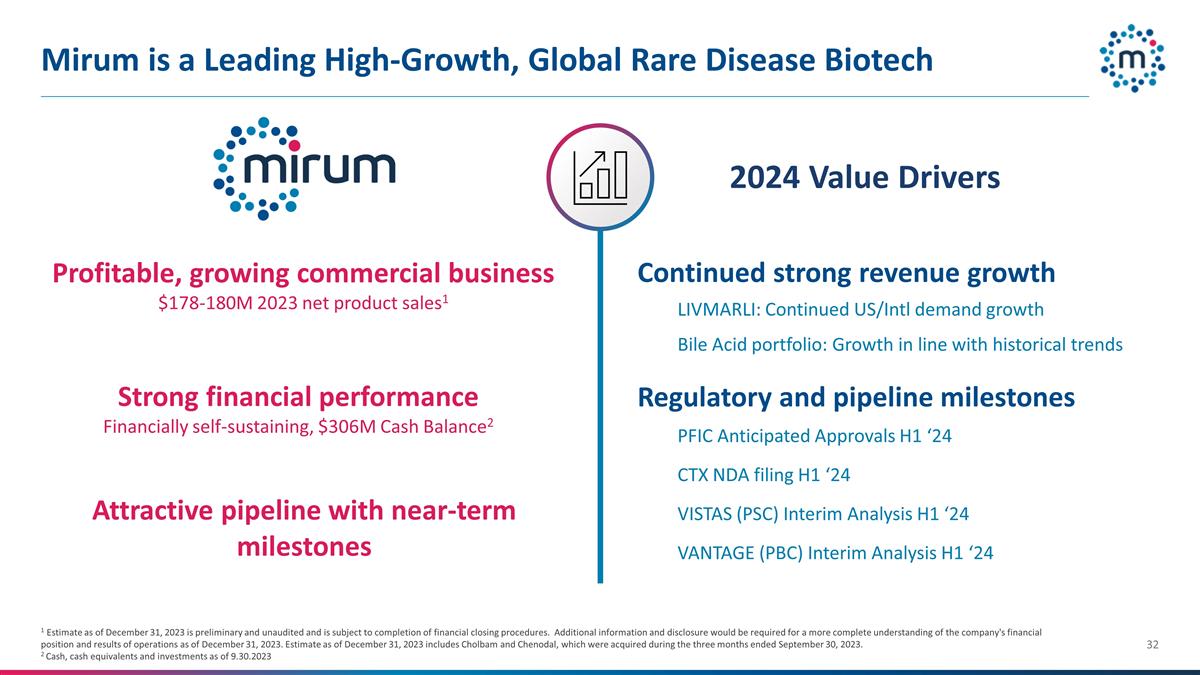
Mirum is a Leading High-Growth, Global Rare Disease Biotech 1 Estimate as of December 31, 2023 is preliminary and unaudited and is subject to completion of financial closing procedures. Additional information and disclosure would be required for a more complete understanding of the company's financial position and results of operations as of December 31, 2023. Estimate as of December 31, 2023 includes Cholbam and Chenodal, which were acquired during the three months ended September 30, 2023. 2 Cash, cash equivalents and investments as of 9.30.2023 Profitable, growing commercial business $178-180M 2023 net product sales1 Strong financial performance Financially self-sustaining, $306M Cash Balance2 Attractive pipeline with near-term milestones Continued strong revenue growth Bile Acid portfolio: Growth in line with historical trends LIVMARLI: Continued US/Intl demand growth PFIC Anticipated Approvals H1 ‘24 CTX NDA filing H1 ‘24 VISTAS (PSC) Interim Analysis H1 ‘24 VANTAGE (PBC) Interim Analysis H1 ‘24 2024 Value Drivers Regulatory and pipeline milestones
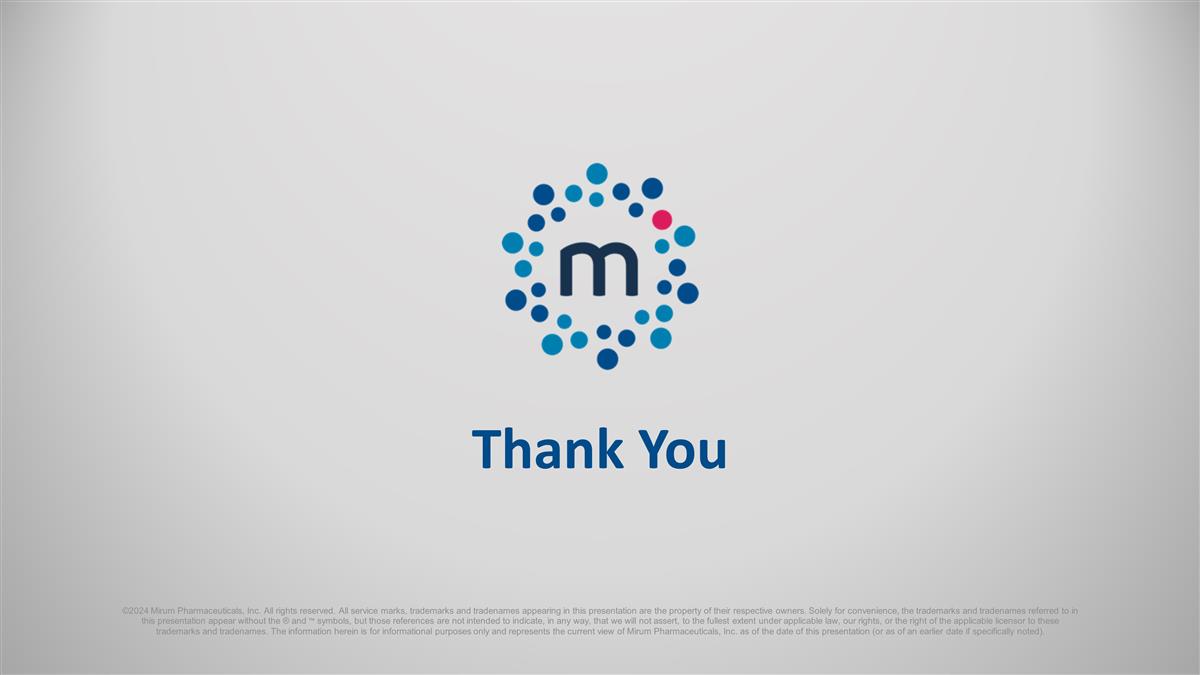
Thank You
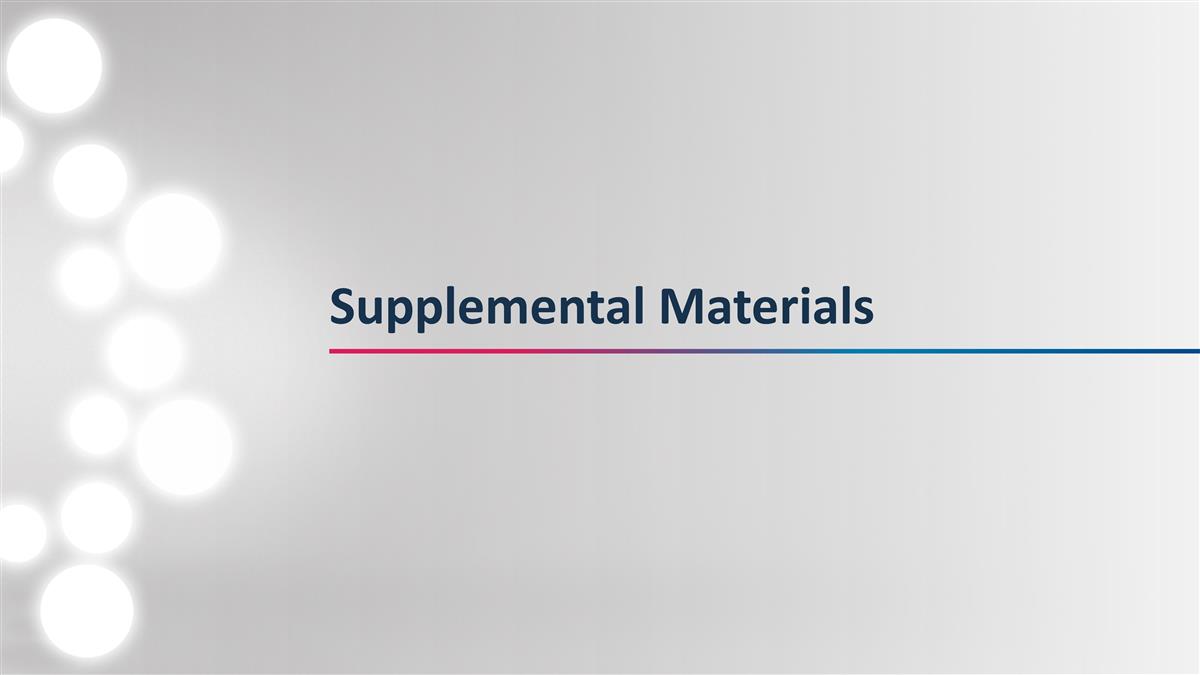
Supplemental Materials
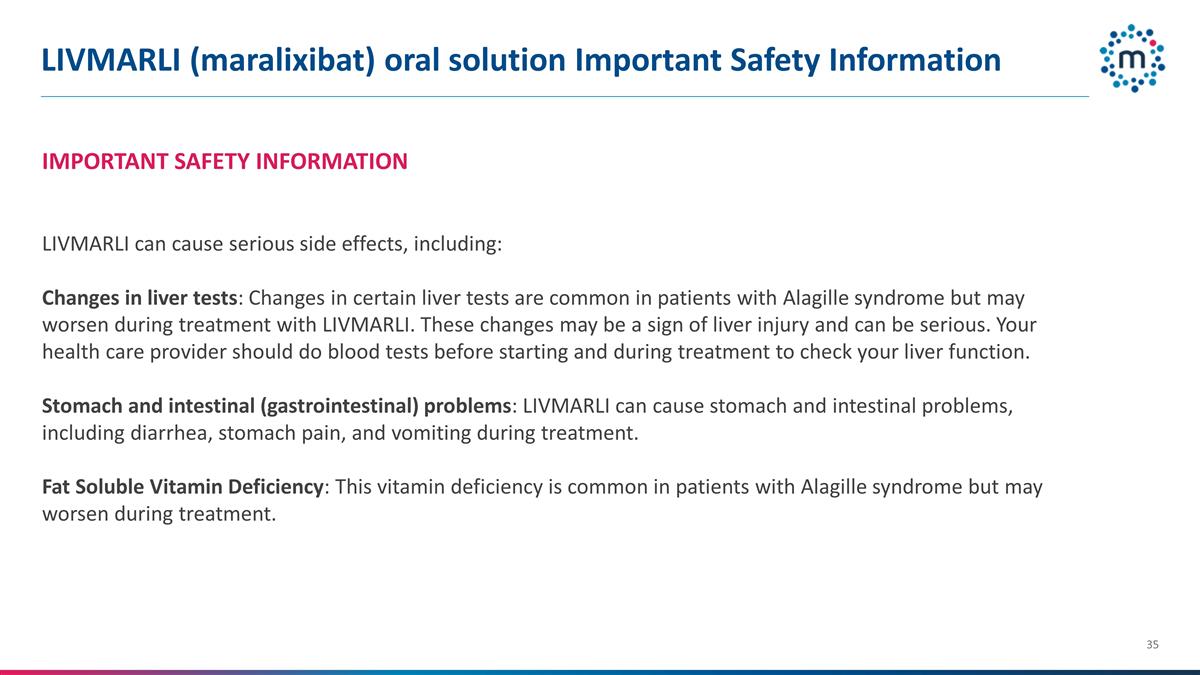
LIVMARLI (maralixibat) oral solution Important Safety Information IMPORTANT SAFETY INFORMATION LIVMARLI can cause serious side effects, including: Changes in liver tests: Changes in certain liver tests are common in patients with Alagille syndrome but may worsen during treatment with LIVMARLI. These changes may be a sign of liver injury and can be serious. Your health care provider should do blood tests before starting and during treatment to check your liver function. Stomach and intestinal (gastrointestinal) problems: LIVMARLI can cause stomach and intestinal problems, including diarrhea, stomach pain, and vomiting during treatment. Fat Soluble Vitamin Deficiency: This vitamin deficiency is common in patients with Alagille syndrome but may worsen during treatment.
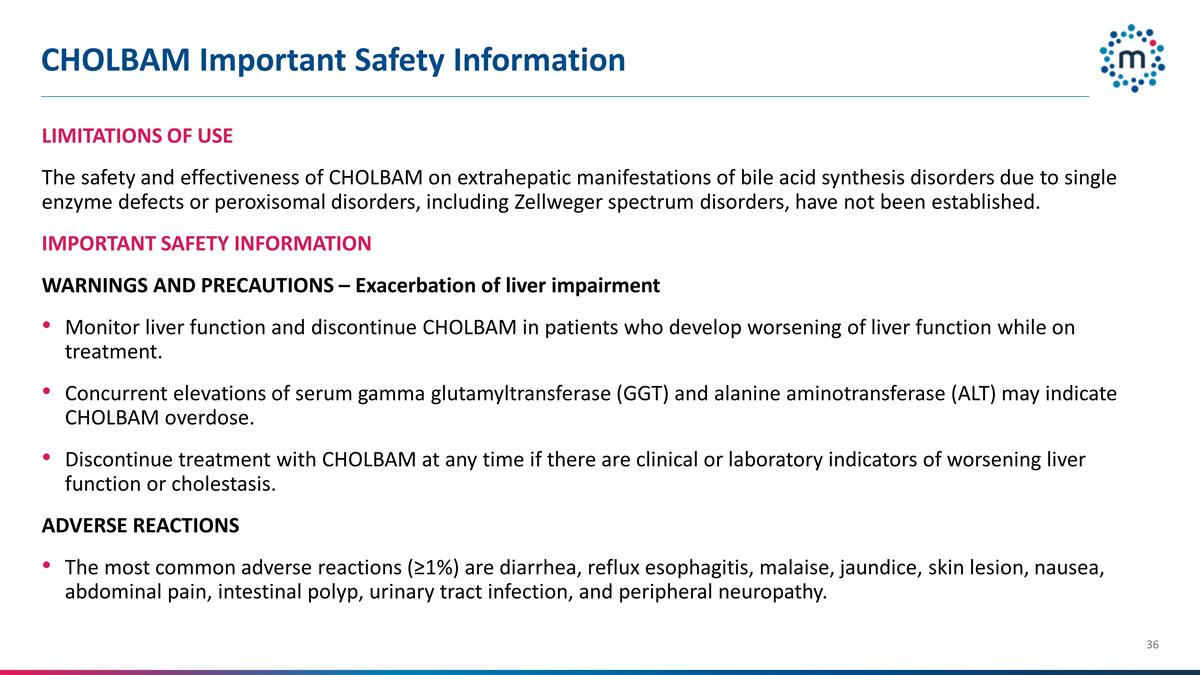
CHOLBAM Important Safety Information LIMITATIONS OF USE The safety and effectiveness of CHOLBAM on extrahepatic manifestations of bile acid synthesis disorders due to single enzyme defects or peroxisomal disorders, including Zellweger spectrum disorders, have not been established. IMPORTANT SAFETY INFORMATION WARNINGS AND PRECAUTIONS – Exacerbation of liver impairment Monitor liver function and discontinue CHOLBAM in patients who develop worsening of liver function while on treatment. Concurrent elevations of serum gamma glutamyltransferase (GGT) and alanine aminotransferase (ALT) may indicate CHOLBAM overdose. Discontinue treatment with CHOLBAM at any time if there are clinical or laboratory indicators of worsening liver function or cholestasis. ADVERSE REACTIONS The most common adverse reactions (≥1%) are diarrhea, reflux esophagitis, malaise, jaundice, skin lesion, nausea, abdominal pain, intestinal polyp, urinary tract infection, and peripheral neuropathy.
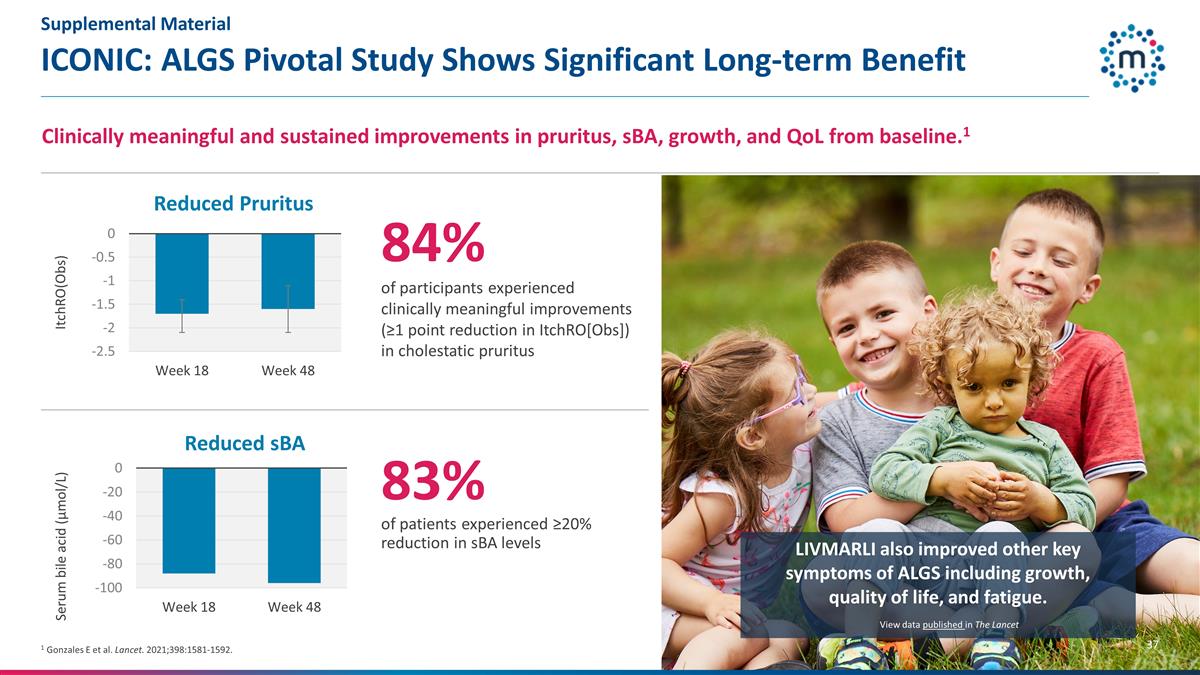
ICONIC: ALGS Pivotal Study Shows Significant Long-term Benefit 1 Gonzales E et al. Lancet. 2021;398:1581-1592. 84% of participants experienced clinically meaningful improvements (≥1 point reduction in ItchRO[Obs]) in cholestatic pruritus LIVMARLI also improved other key symptoms of ALGS including growth, quality of life, and fatigue. Clinically meaningful and sustained improvements in pruritus, sBA, growth, and QoL from baseline.1 83% of patients experienced ≥20% reduction in sBA levels View data published in The Lancet Supplemental Material
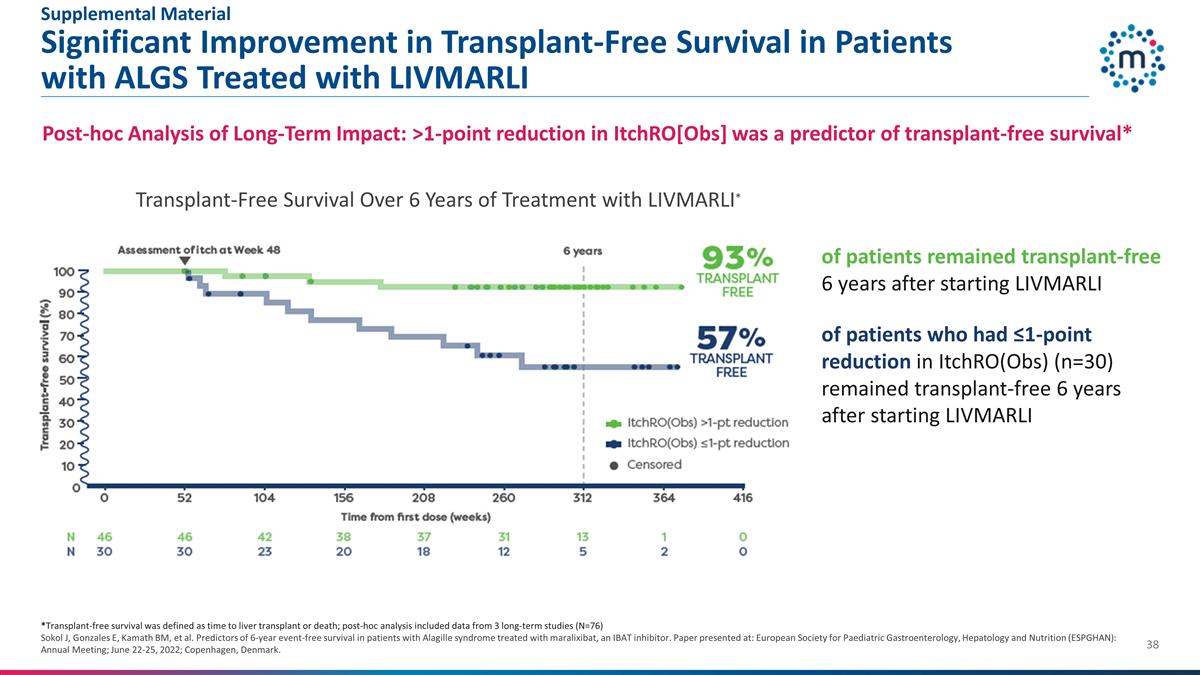
Significant Improvement in Transplant-Free Survival in Patients with ALGS Treated with LIVMARLI *Transplant-free survival was defined as time to liver transplant or death; post-hoc analysis included data from 3 long-term studies (N=76) Sokol J, Gonzales E, Kamath BM, et al. Predictors of 6-year event-free survival in patients with Alagille syndrome treated with maralixibat, an IBAT inhibitor. Paper presented at: European Society for Paediatric Gastroenterology, Hepatology and Nutrition (ESPGHAN): Annual Meeting; June 22-25, 2022; Copenhagen, Denmark. Transplant-Free Survival Over 6 Years of Treatment with LIVMARLI* Post-hoc Analysis of Long-Term Impact: >1-point reduction in ItchRO[Obs] was a predictor of transplant-free survival* of patients remained transplant-free 6 years after starting LIVMARLI of patients who had ≤1-point reduction in ItchRO(Obs) (n=30) remained transplant-free 6 years after starting LIVMARLI Supplemental Material
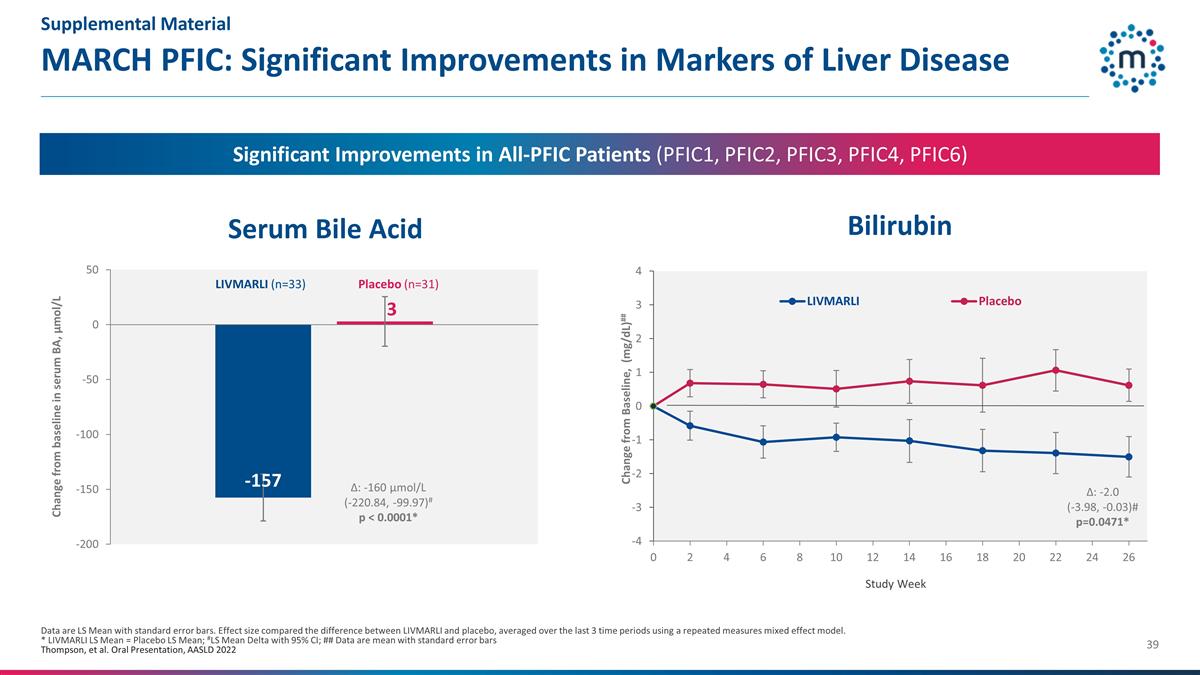
MARCH PFIC: Significant Improvements in Markers of Liver Disease Data are LS Mean with standard error bars. Effect size compared the difference between LIVMARLI and placebo, averaged over the last 3 time periods using a repeated measures mixed effect model. * LIVMARLI LS Mean = Placebo LS Mean; #LS Mean Delta with 95% CI; ## Data are mean with standard error bars Thompson, et al. Oral Presentation, AASLD 2022 3 Change from baseline in serum BA, µmol/L LIVMARLI (n=33) Placebo (n=31) Change from Baseline, (mg/dL)## Δ: -160 µmol/L (-220.84, -99.97)# p < 0.0001* Bilirubin Serum Bile Acid Significant Improvements in All-PFIC Patients (PFIC1, PFIC2, PFIC3, PFIC4, PFIC6) Δ: -2.0 (-3.98, -0.03)# p=0.0471* Supplemental Material

PFIC: sBA Response Associated with Transplant-Free Survival Loomes K et al. Hepatol Commun. 2022;6:2379-2390; n=19 (7 sBA responders, 12 sBA non-responders) *NAPPED criteria (van Wessel et al, 2021): sBA responders defined as having an average sBA of <102 μmol/L (if baseline sBA ≥102 μmol/L), OR a ≤-75% average percent change from baseline Time from enrolment (weeks) TFS (%) 100 60 40 20 80 10 30 50 70 90 0 52 208 260 312 104 156 Log-Rank p=0.0006 sBA Responders INDIGO Phase 2: 100% 5-yr transplant free survival in sBA responders* Supplemental Material
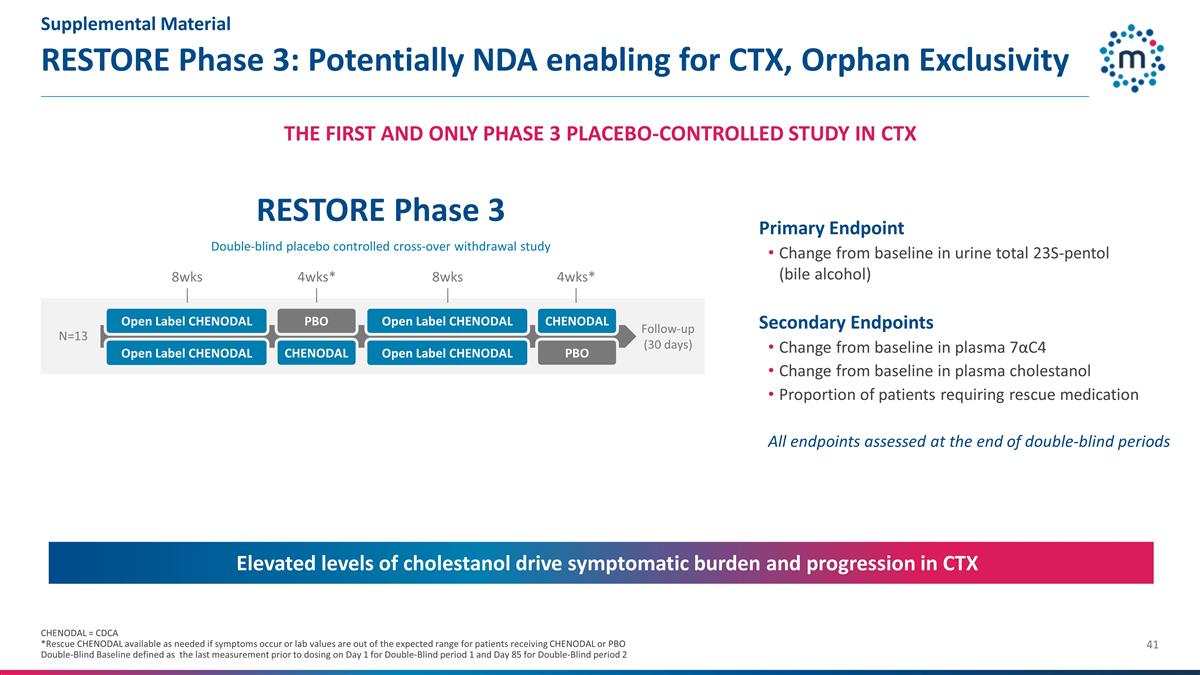
RESTORE Phase 3: Potentially NDA enabling for CTX, Orphan Exclusivity RESTORE Phase 3 Double-blind placebo controlled cross-over withdrawal study Primary Endpoint Change from baseline in urine total 23S-pentol (bile alcohol) Secondary Endpoints Change from baseline in plasma 7αC4 Change from baseline in plasma cholestanol Proportion of patients requiring rescue medication All endpoints assessed at the end of double-blind periods Follow-up (30 days) 8wks 4wks* PBO 4wks* Open Label CHENODAL 8wks N=13 CHENODAL CHENODAL PBO Open Label CHENODAL Open Label CHENODAL Open Label CHENODAL Elevated levels of cholestanol drive symptomatic burden and progression in CTX CHENODAL = CDCA *Rescue CHENODAL available as needed if symptoms occur or lab values are out of the expected range for patients receiving CHENODAL or PBO Double-Blind Baseline defined as the last measurement prior to dosing on Day 1 for Double-Blind period 1 and Day 85 for Double-Blind period 2 THE FIRST AND ONLY PHASE 3 PLACEBO-CONTROLLED STUDY IN CTX Supplemental Material

RESTORE Phase 3 study: All Primary and Secondary Endpoints Met Data Mean Difference with 95% CI P-values from a paired t-test comparing CHENODAL with placebo is performed on the change from double-blind (DB) baseline (BL) to last non-missing post-BL DB record on natural log-transformed scale Adverse Events The most commonly reported adverse events while on CHENODAL were diarrhea (n=5) and headache (n=3) The majority of adverse events reported were mild or moderate in severity and not considered to be treatment-related Urine 23S-Pentol (bile alcohol) ng/mL p<0.0001 20-fold increase after withdrawal (CI: 10.3, 43.5) Plasma 7αC4 ng/mL p<0.0001 50-fold increase after withdrawal (CI: 25.0, 66.7) Plasma Cholestanol ug/mL p=0.0083 2.8-fold increase after withdrawal (CI: 1.5, 5.2) % PBO pts requiring rescue CHENODAL during double blind withdrawal periods p=0.0006 61.5% (CI: 31.6%, 86.1%) Clinically meaningful improvements in primary and secondary endpoints; NDA filing planned 1H 2024 Difference at end of DB period (placebo relative to CHENODAL) (95% CI) Primary Endpoint Key Secondary Endpoints Supplemental Material









































